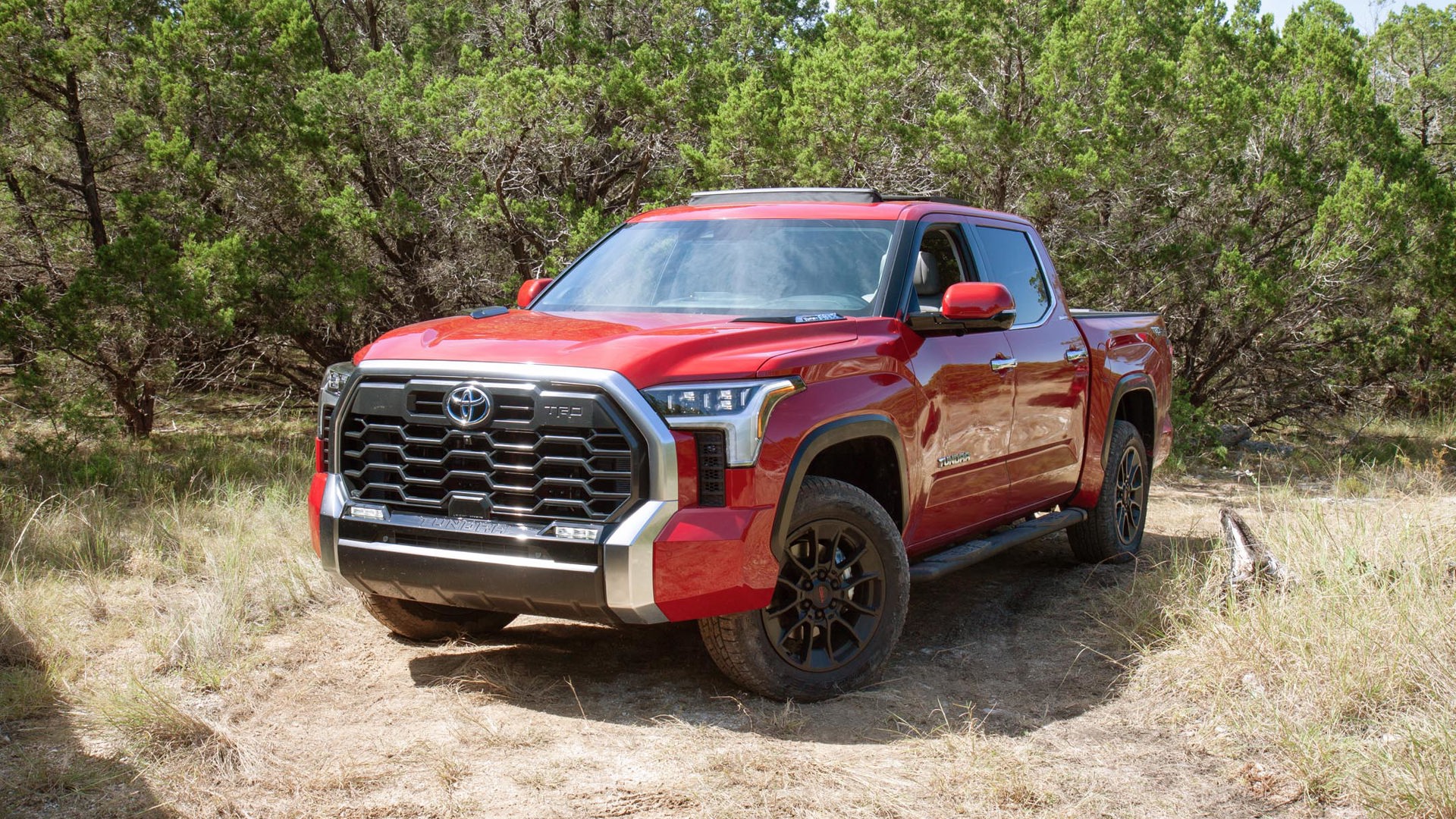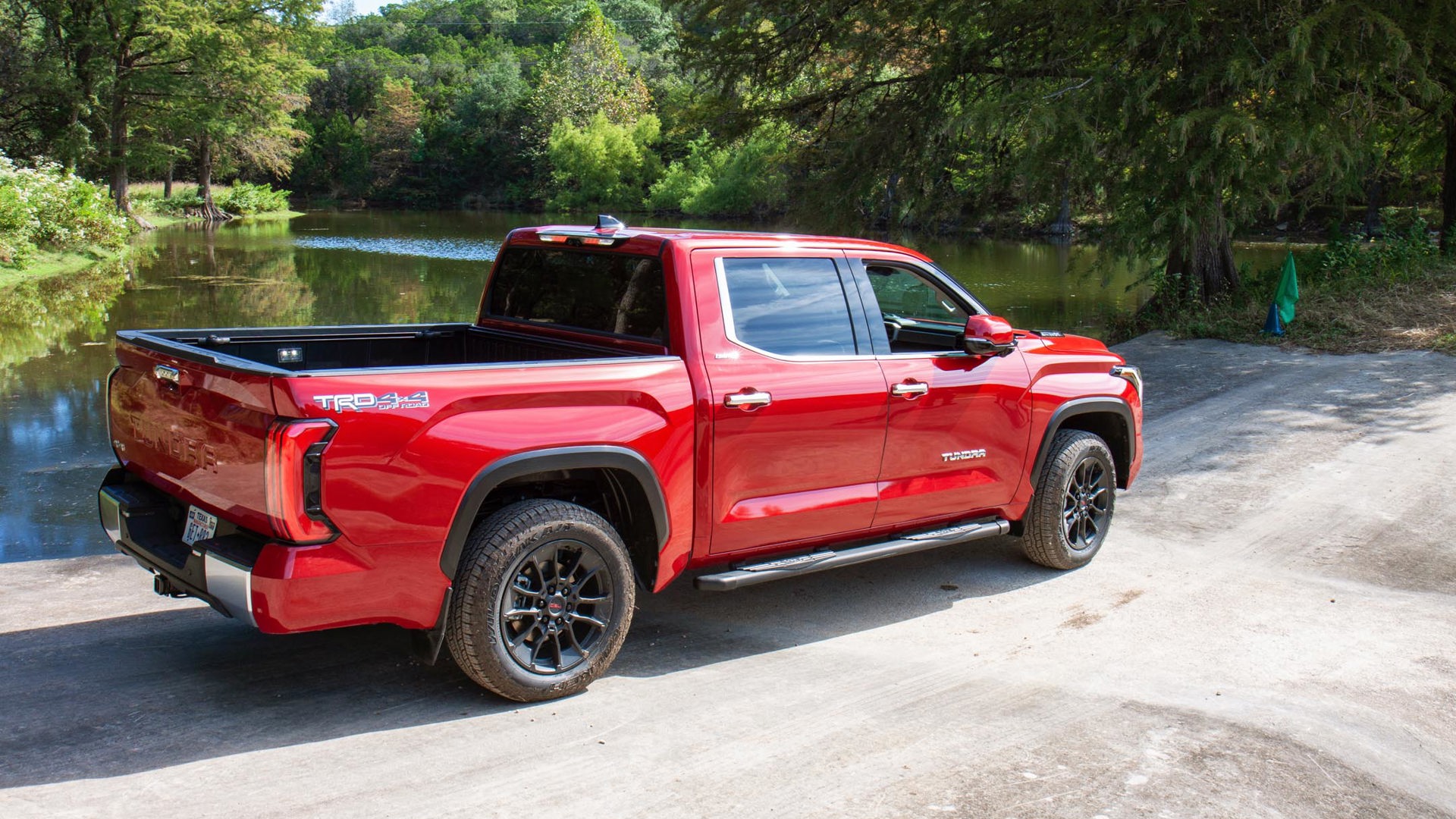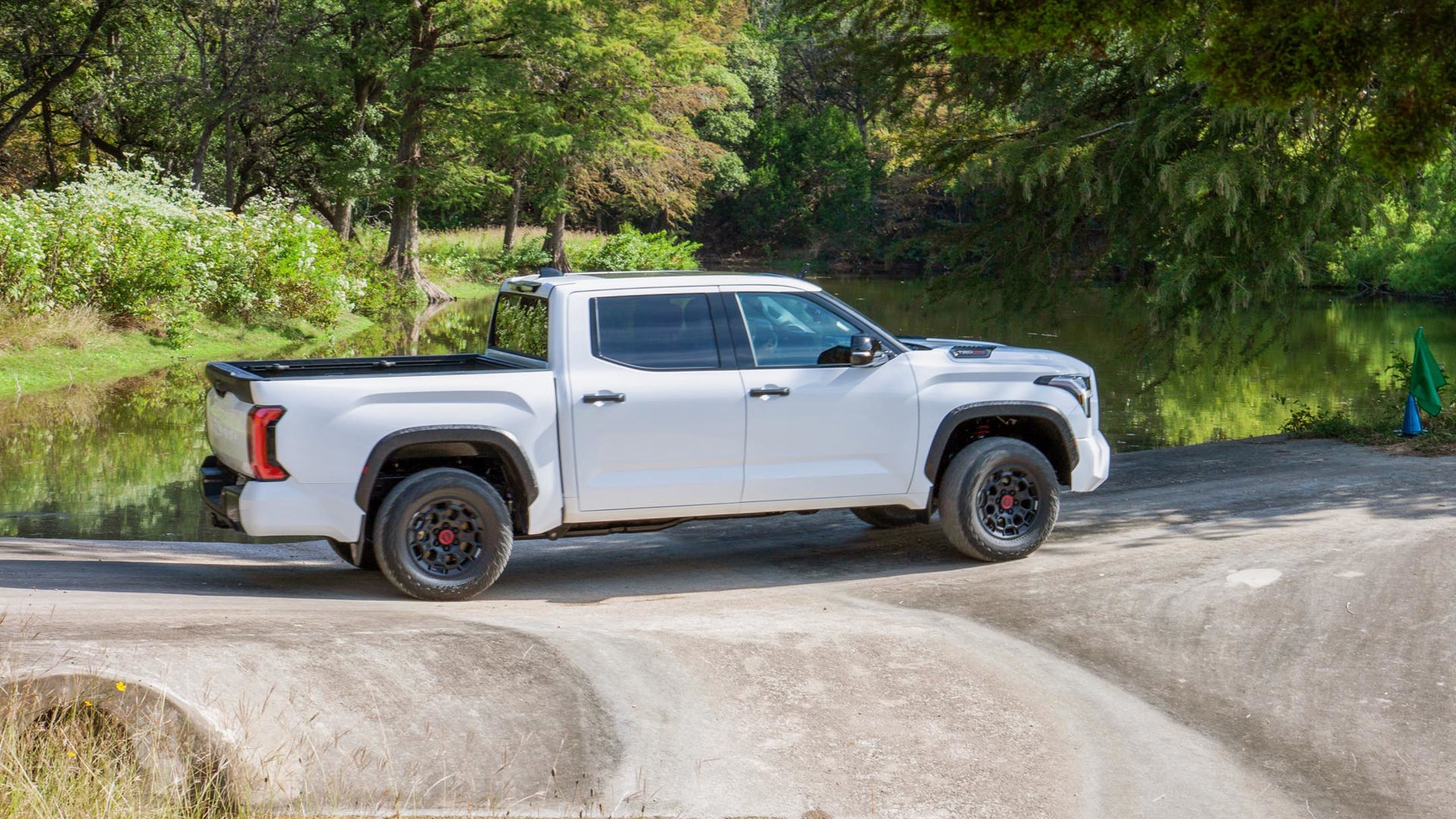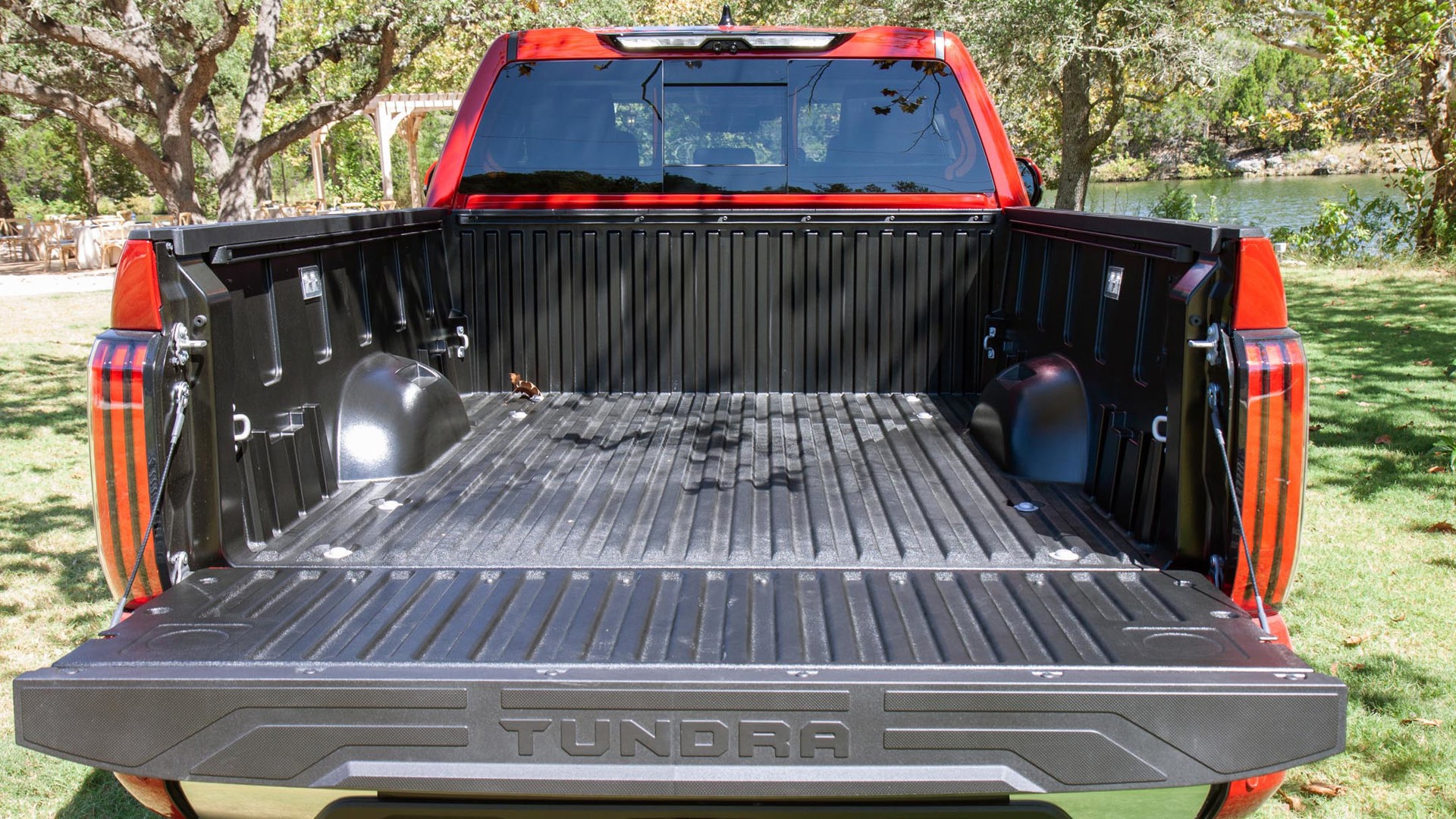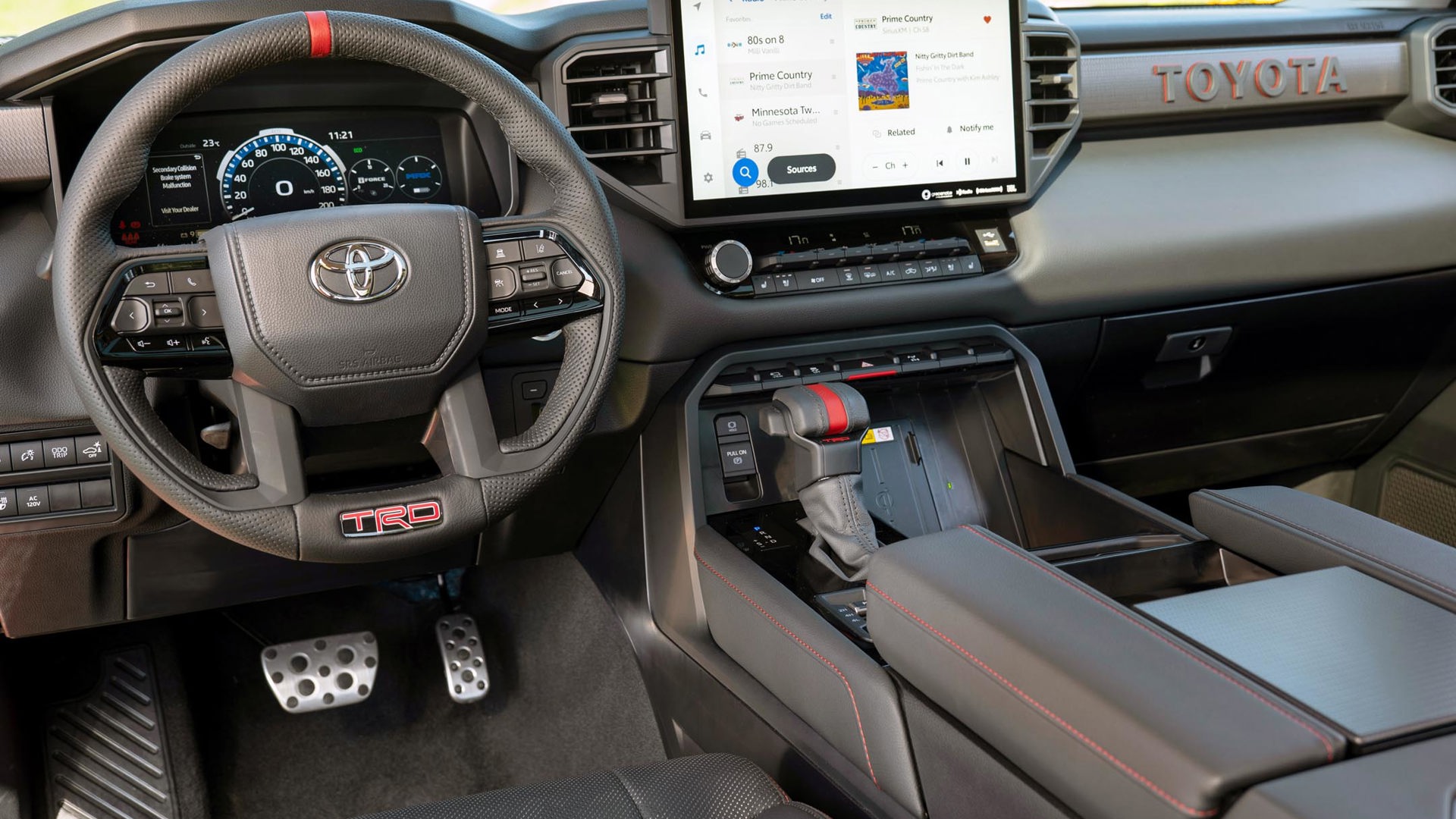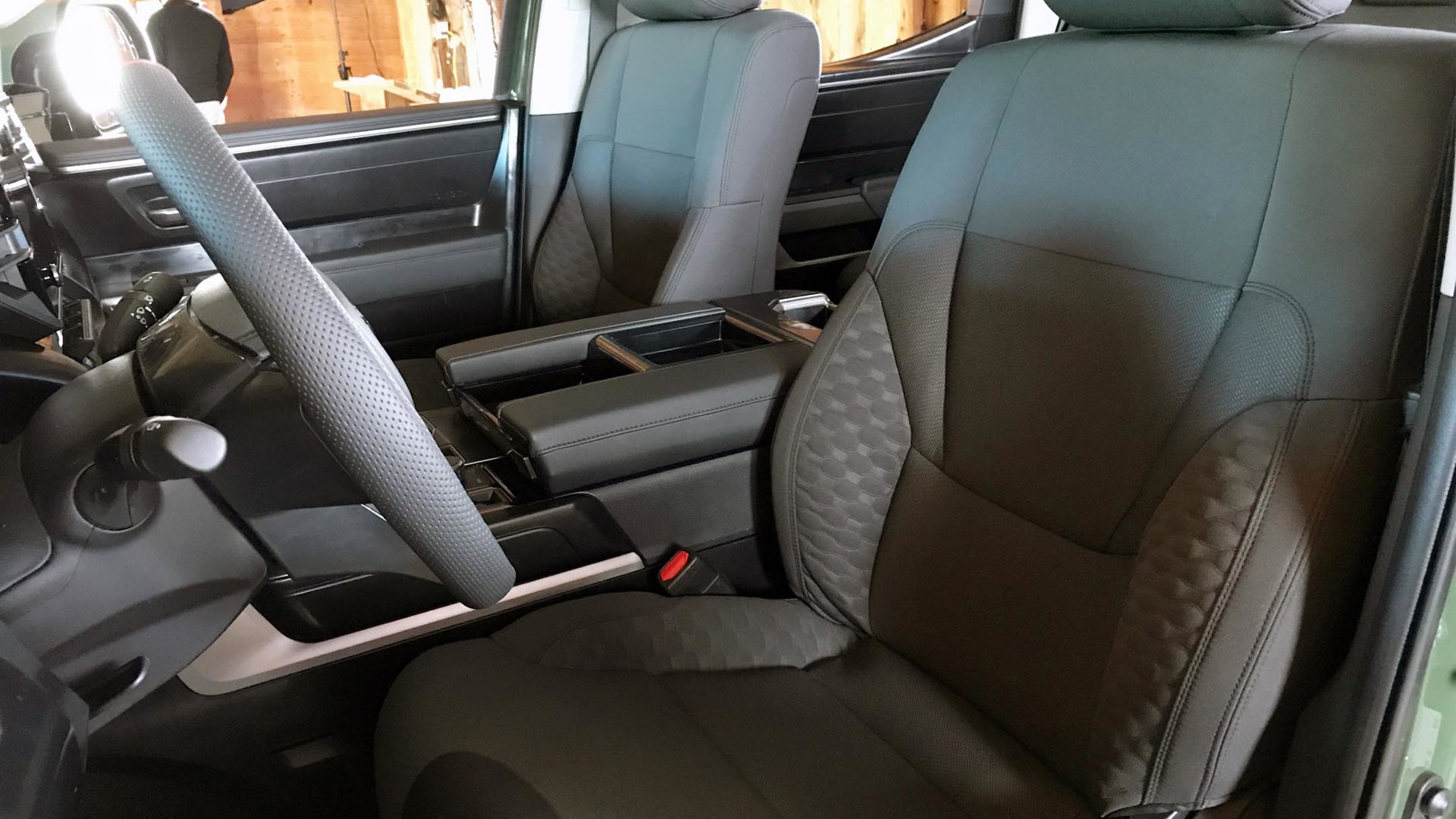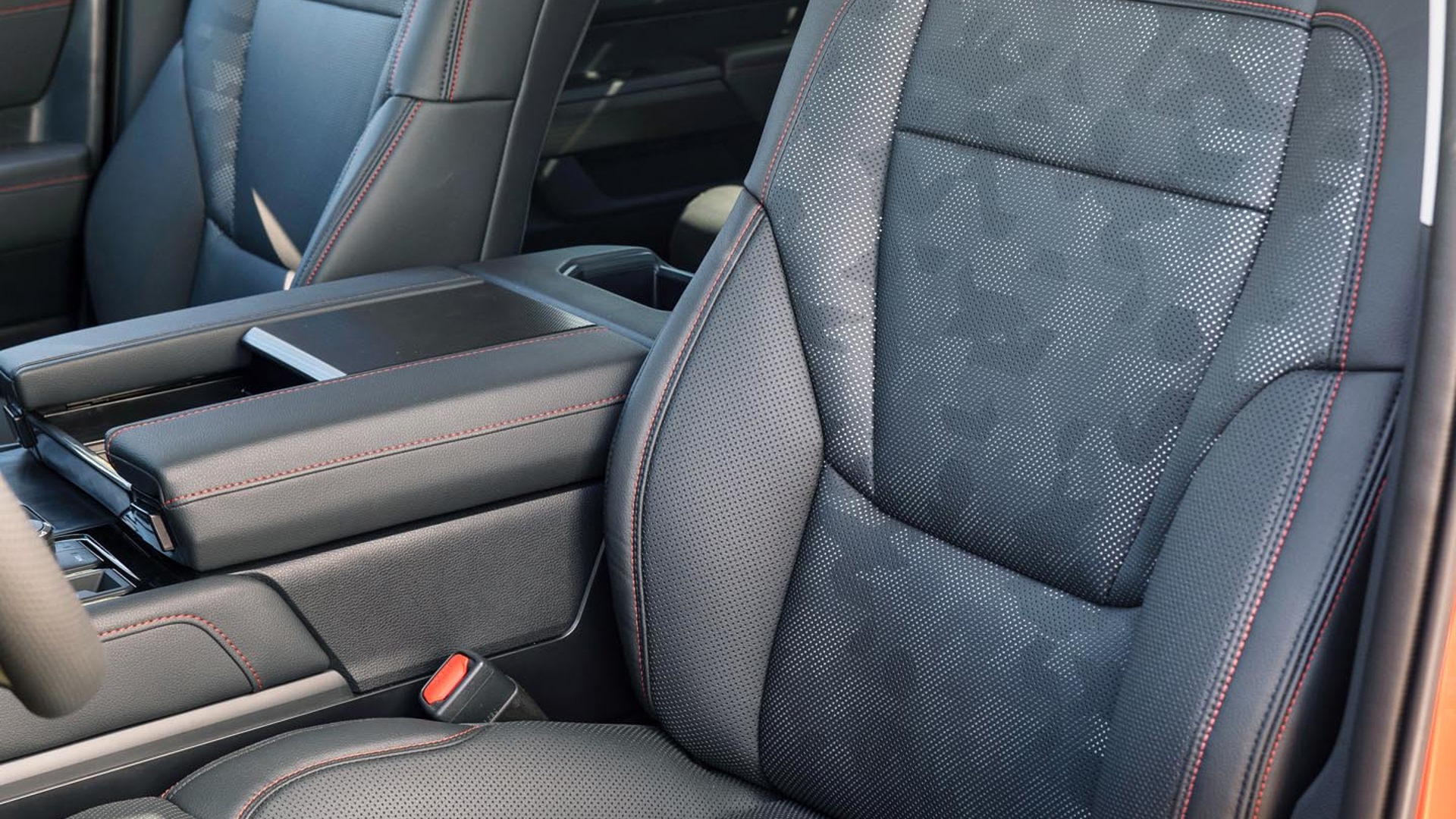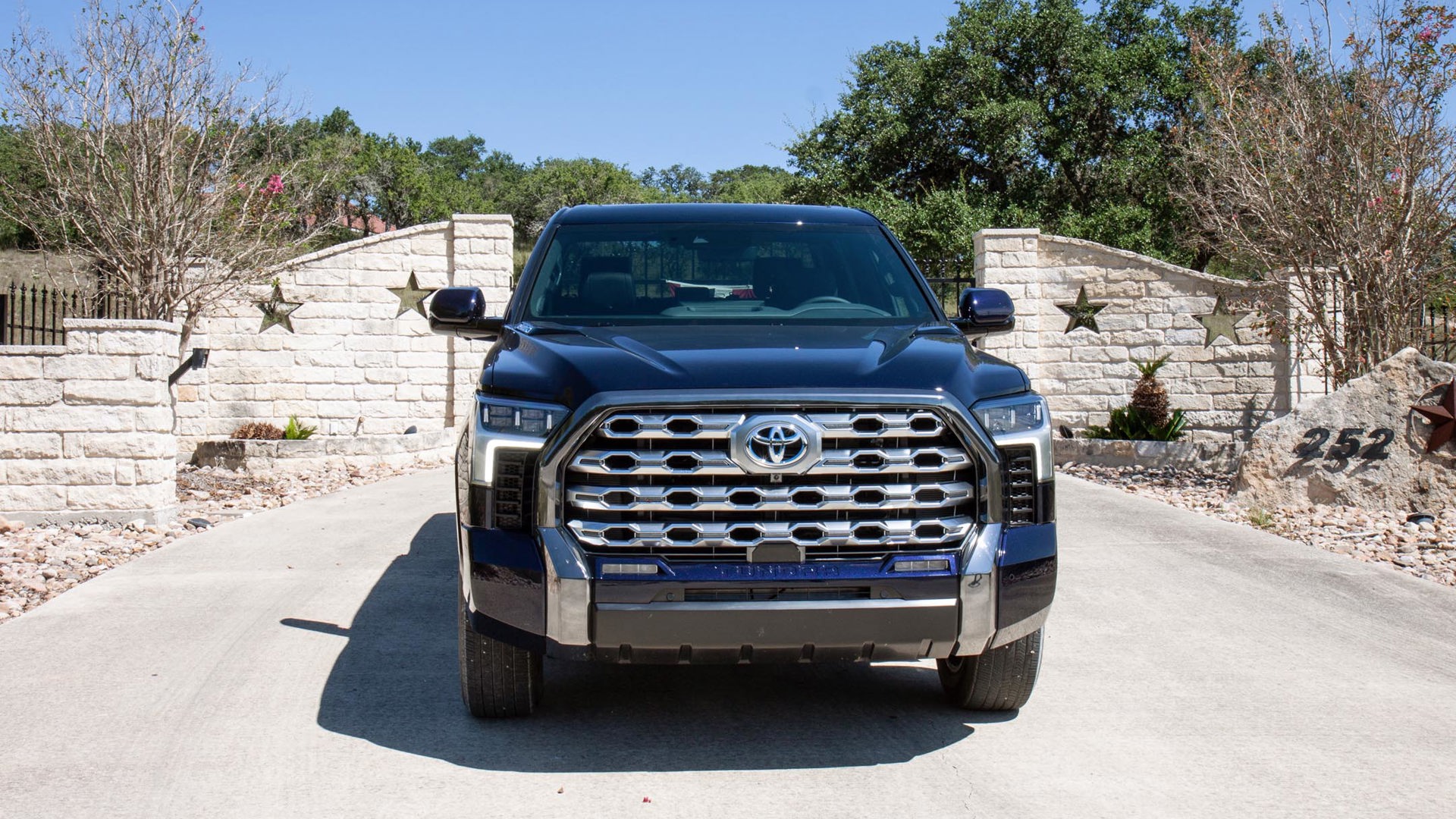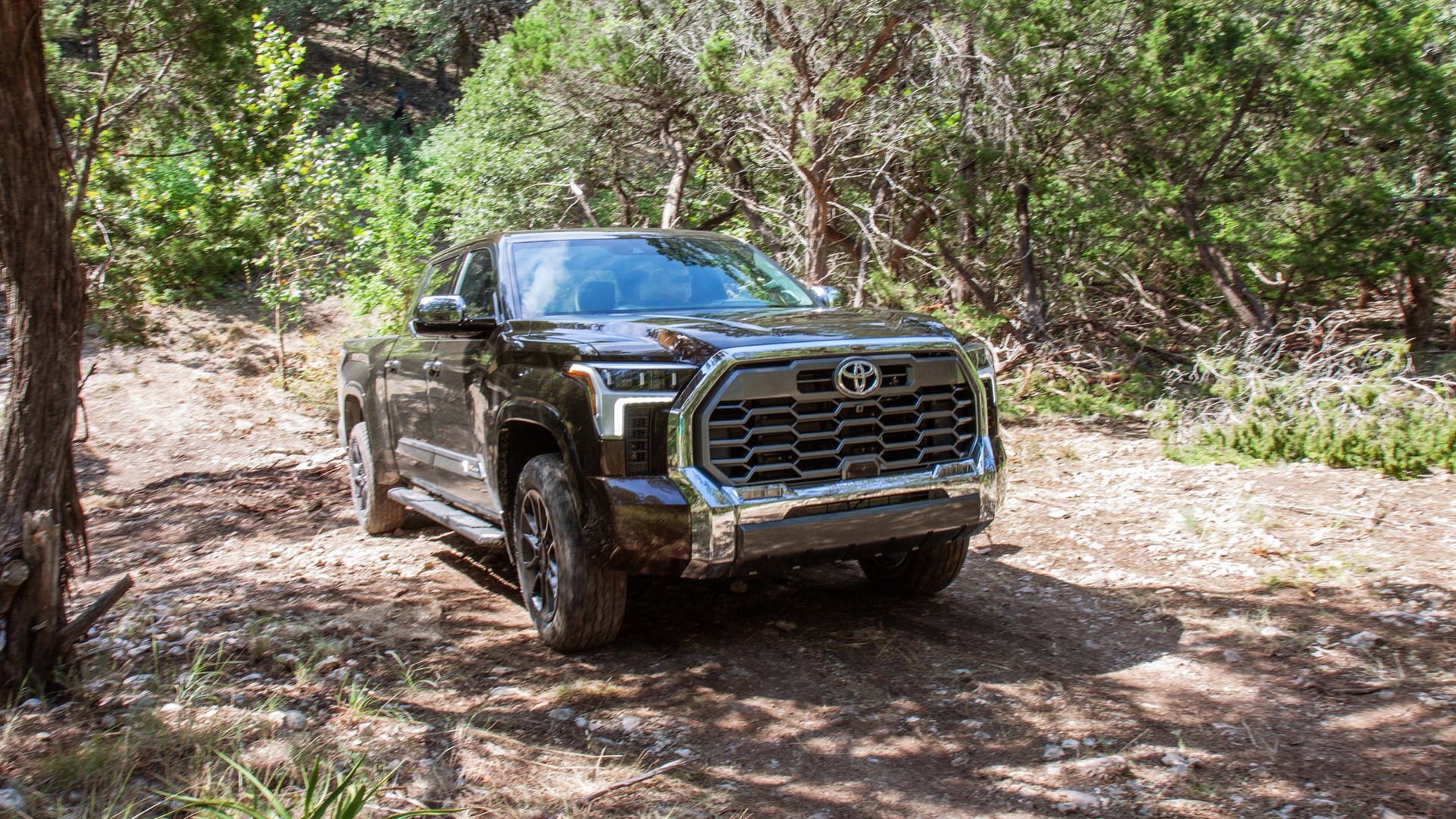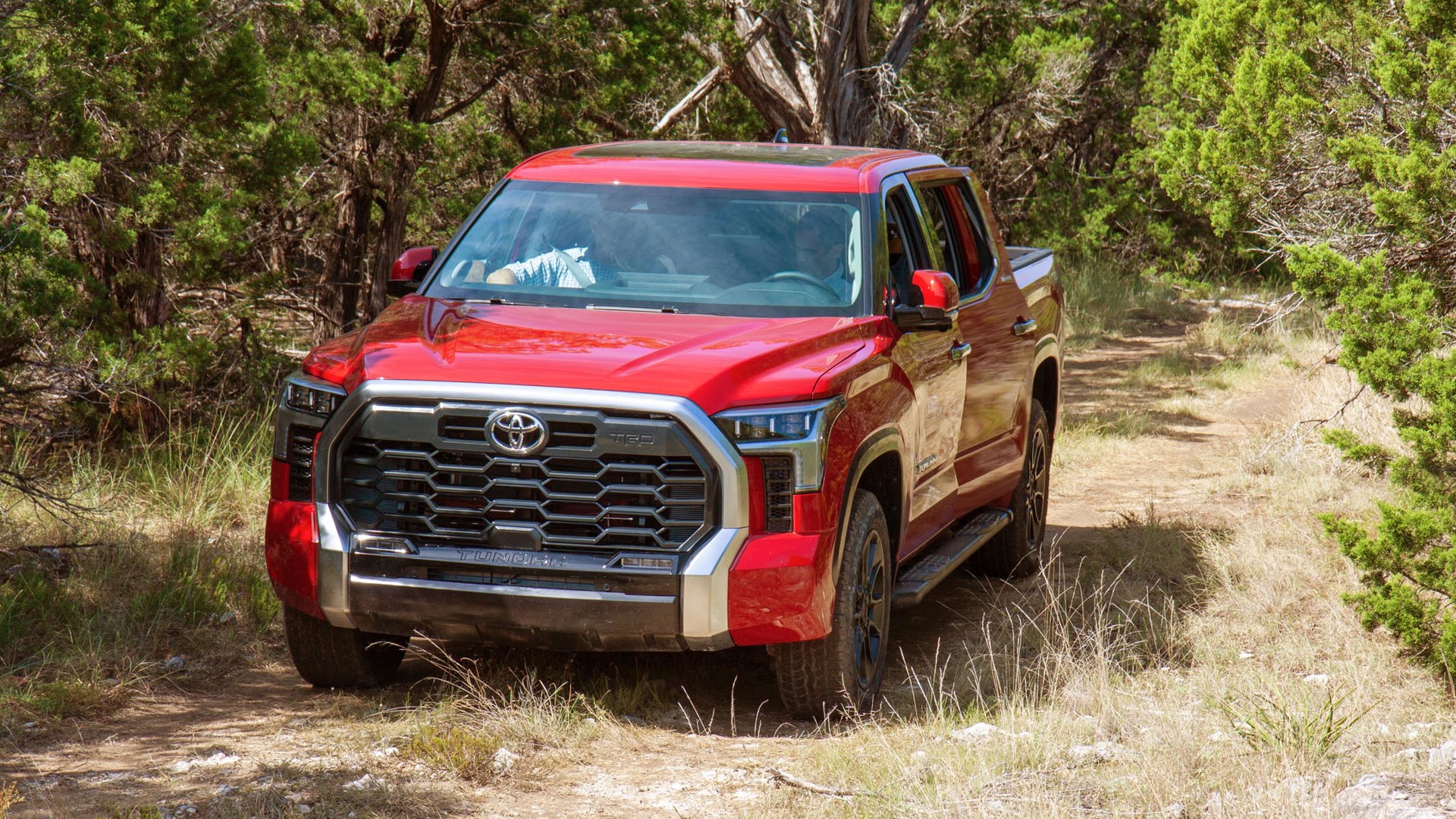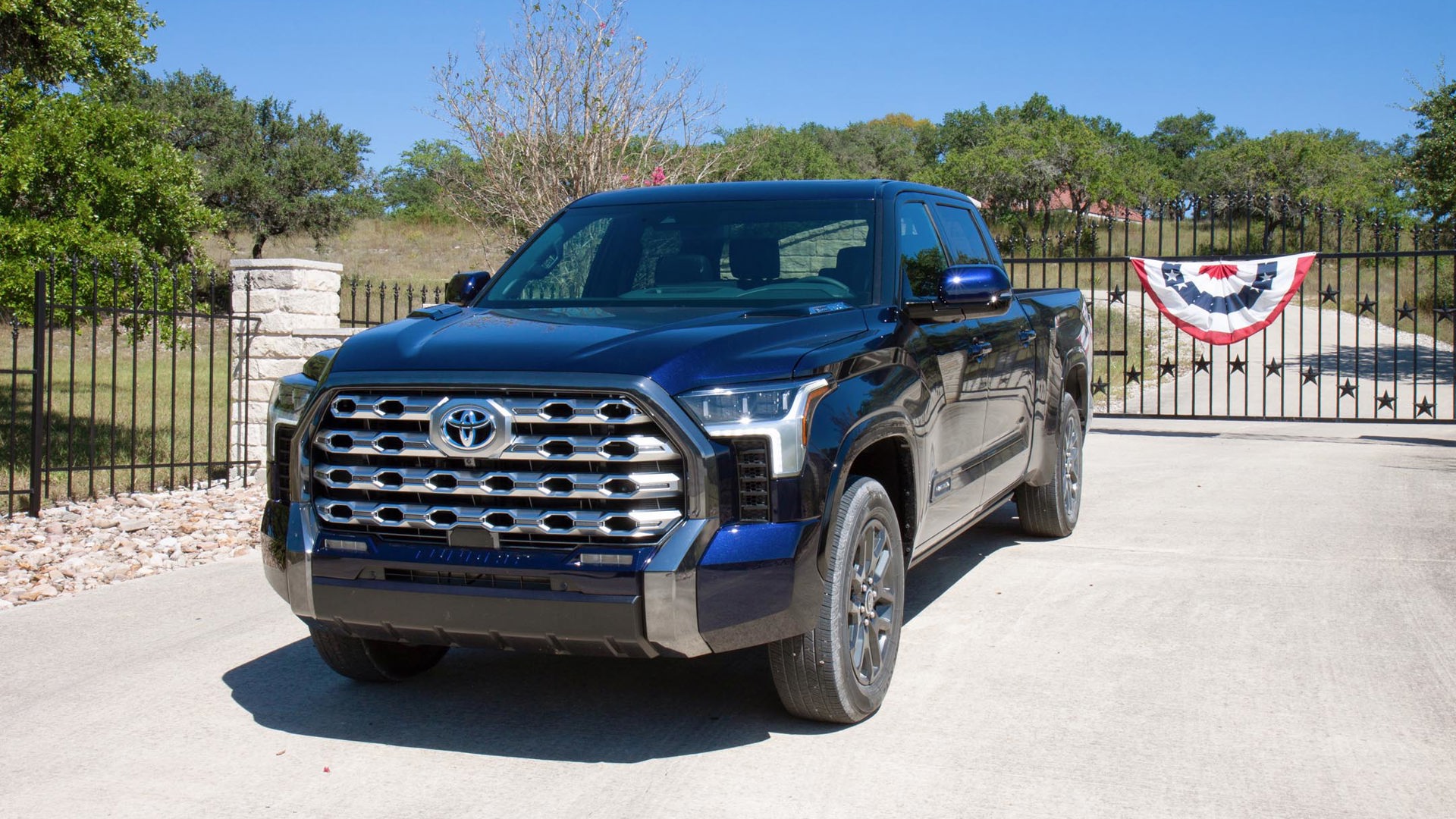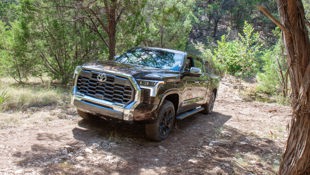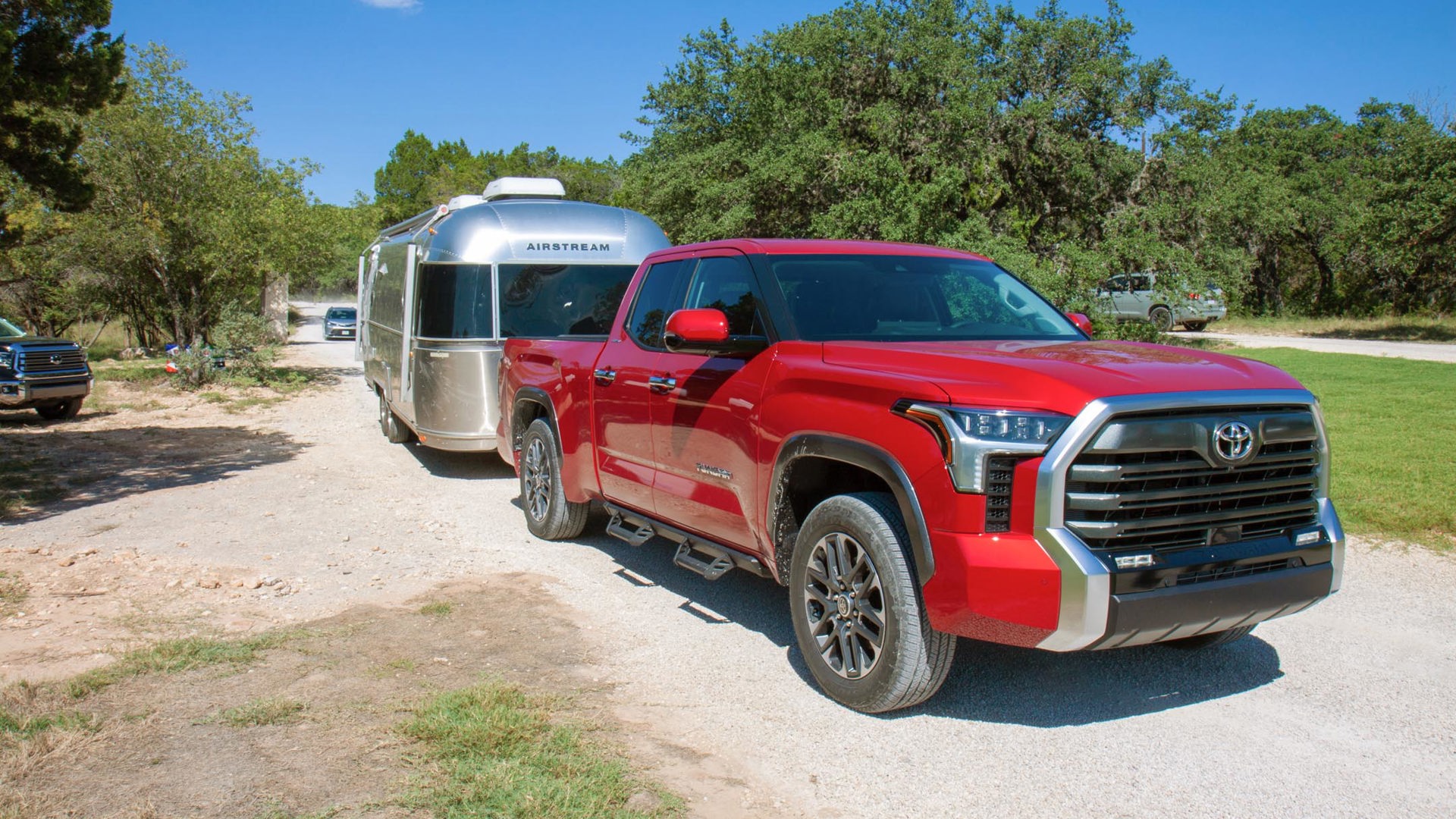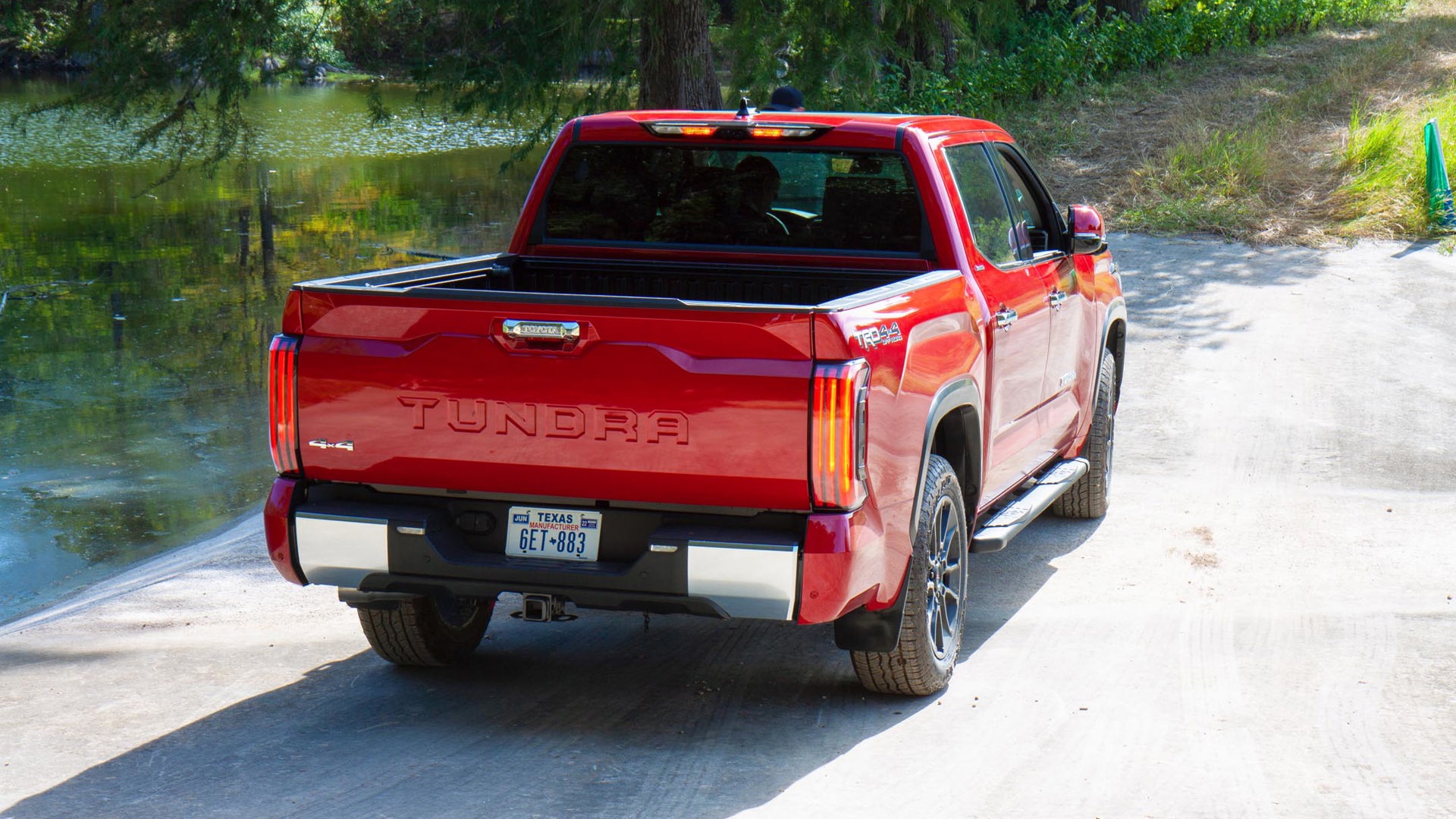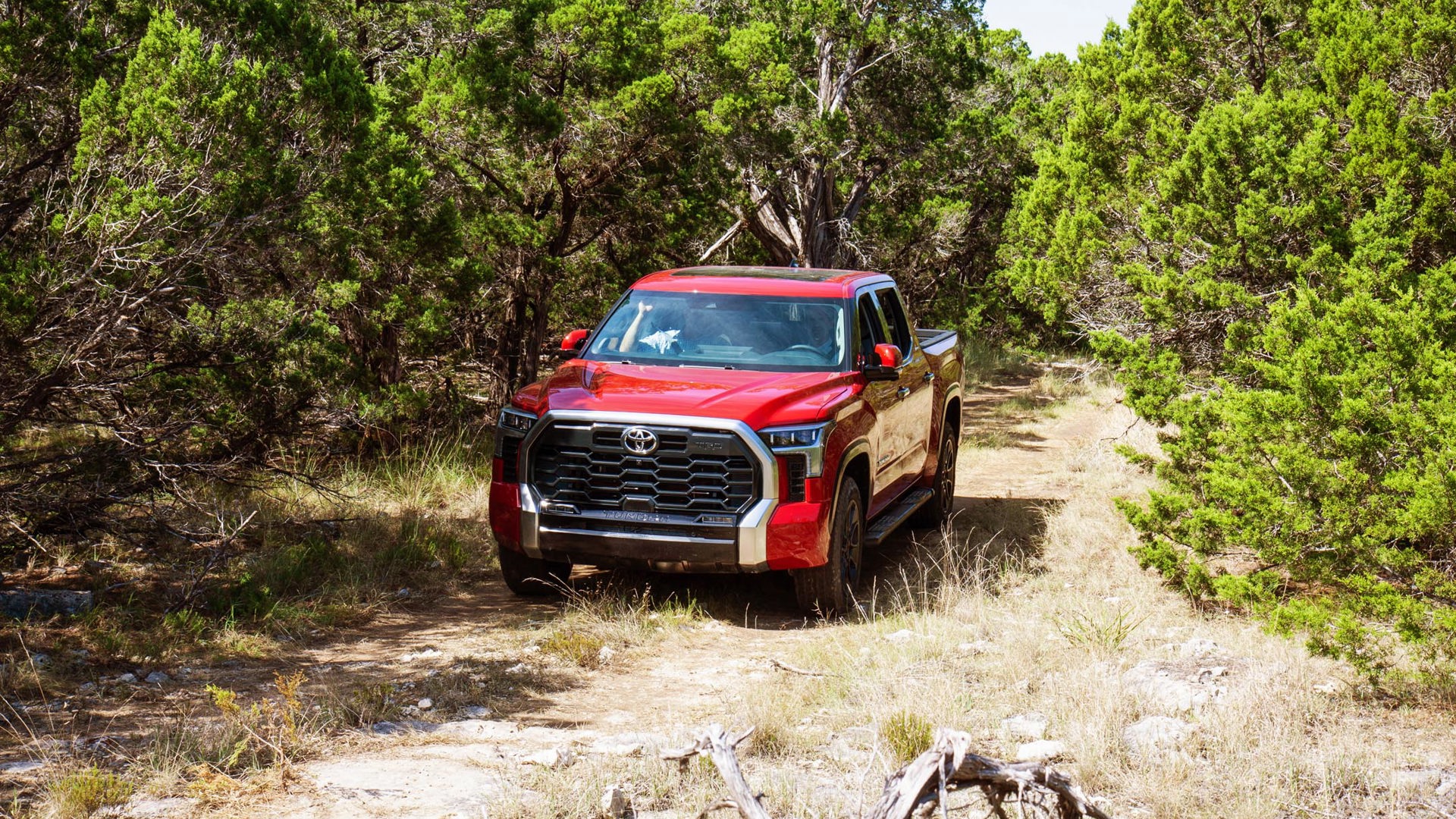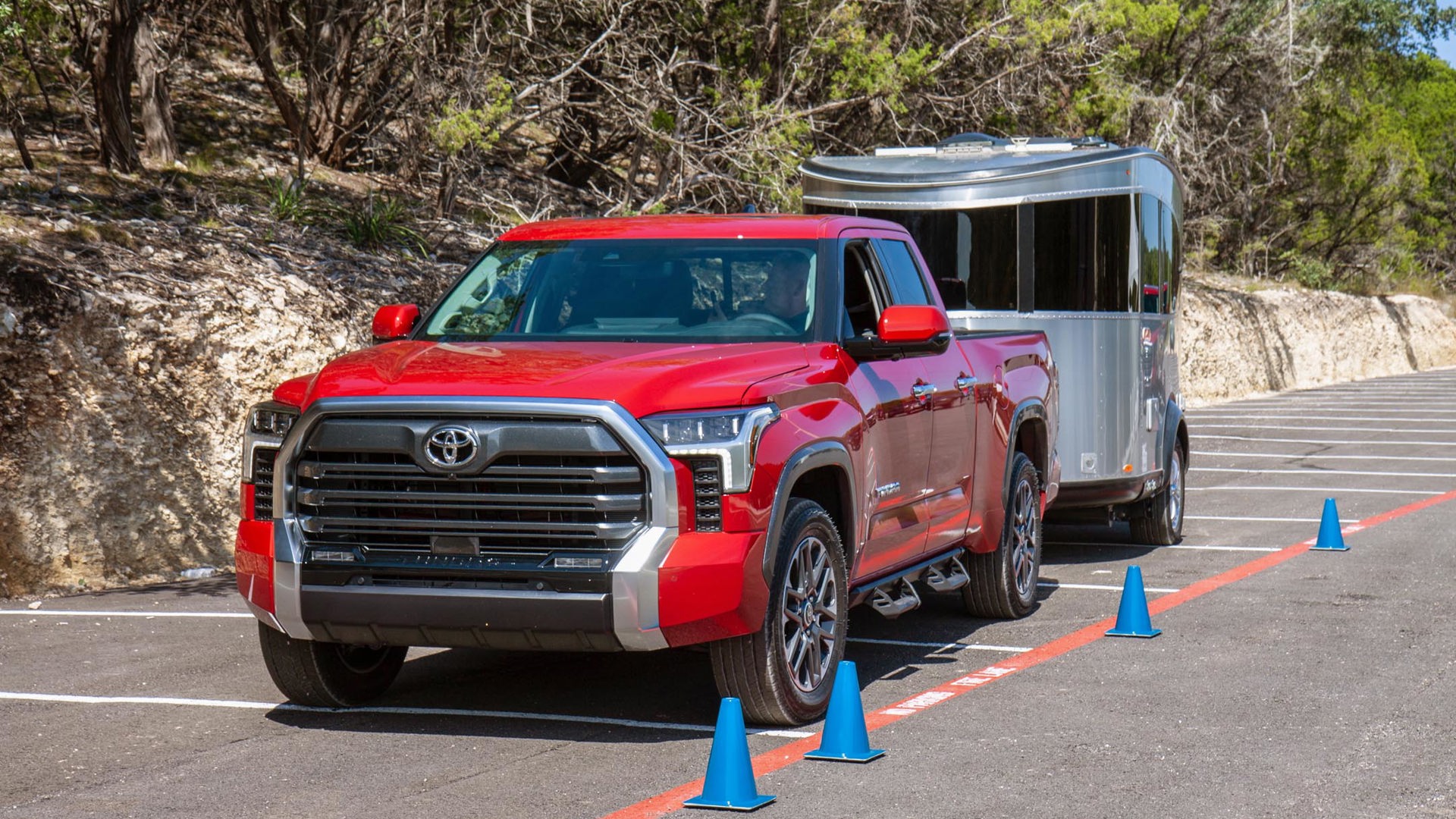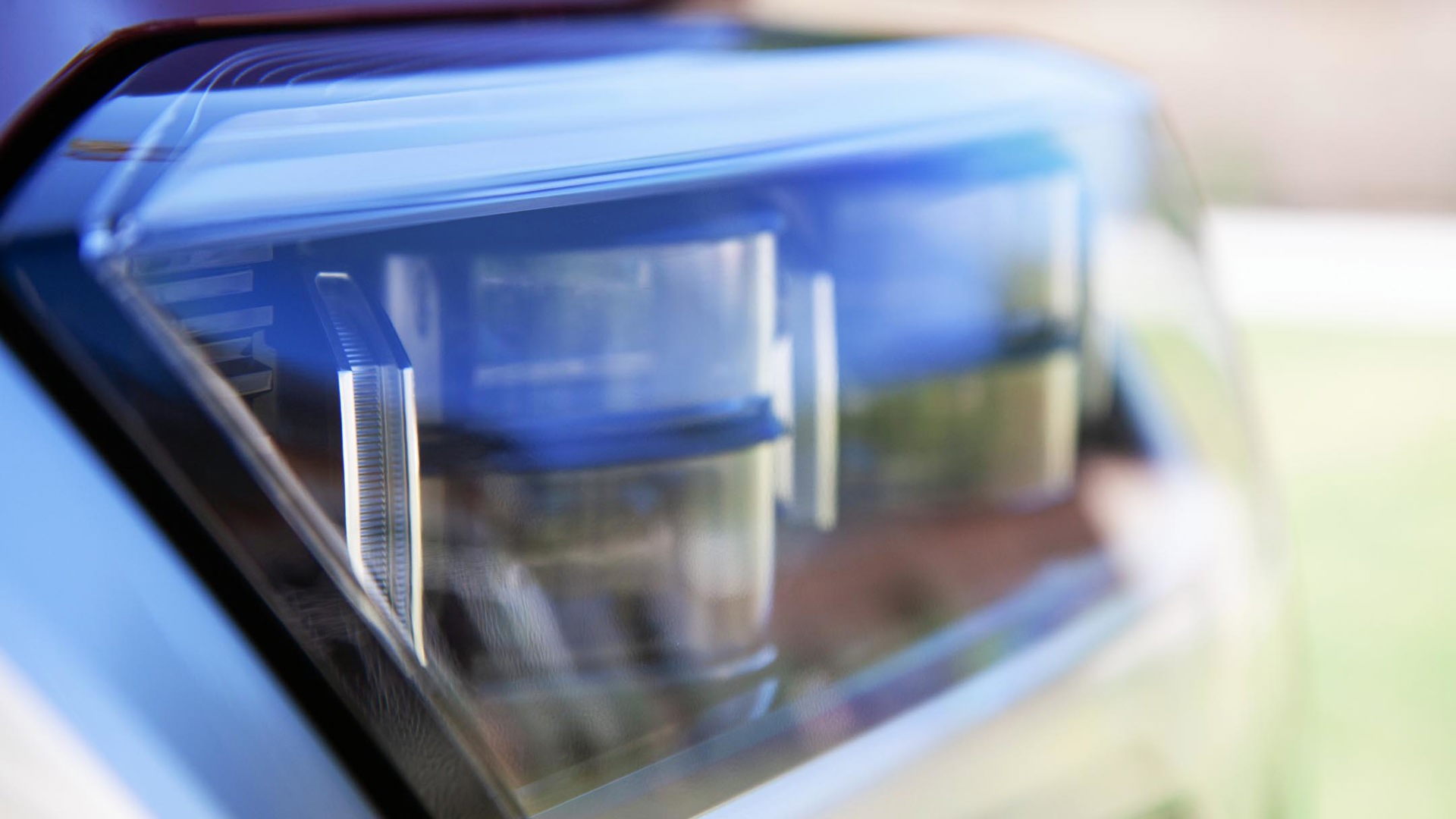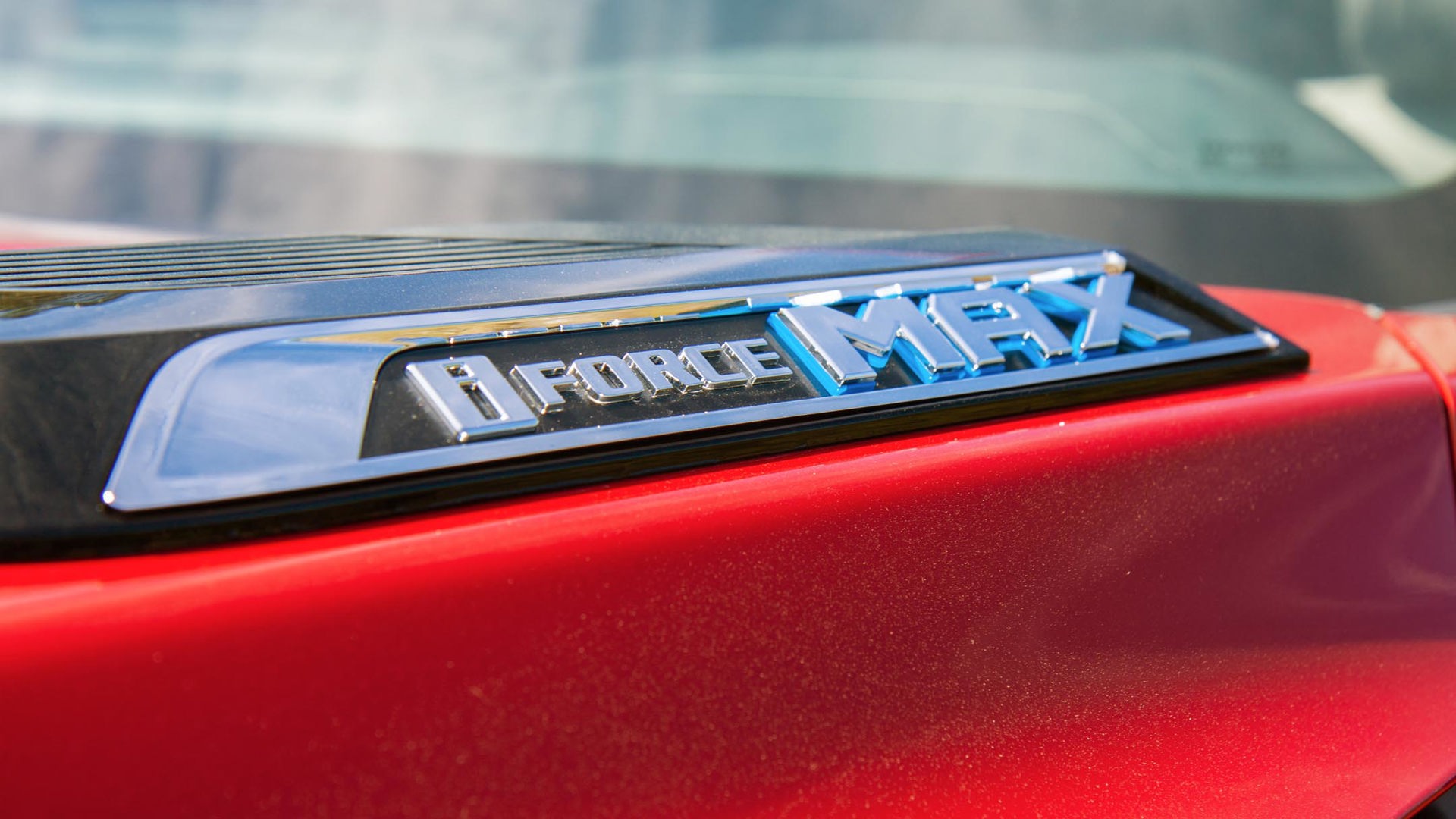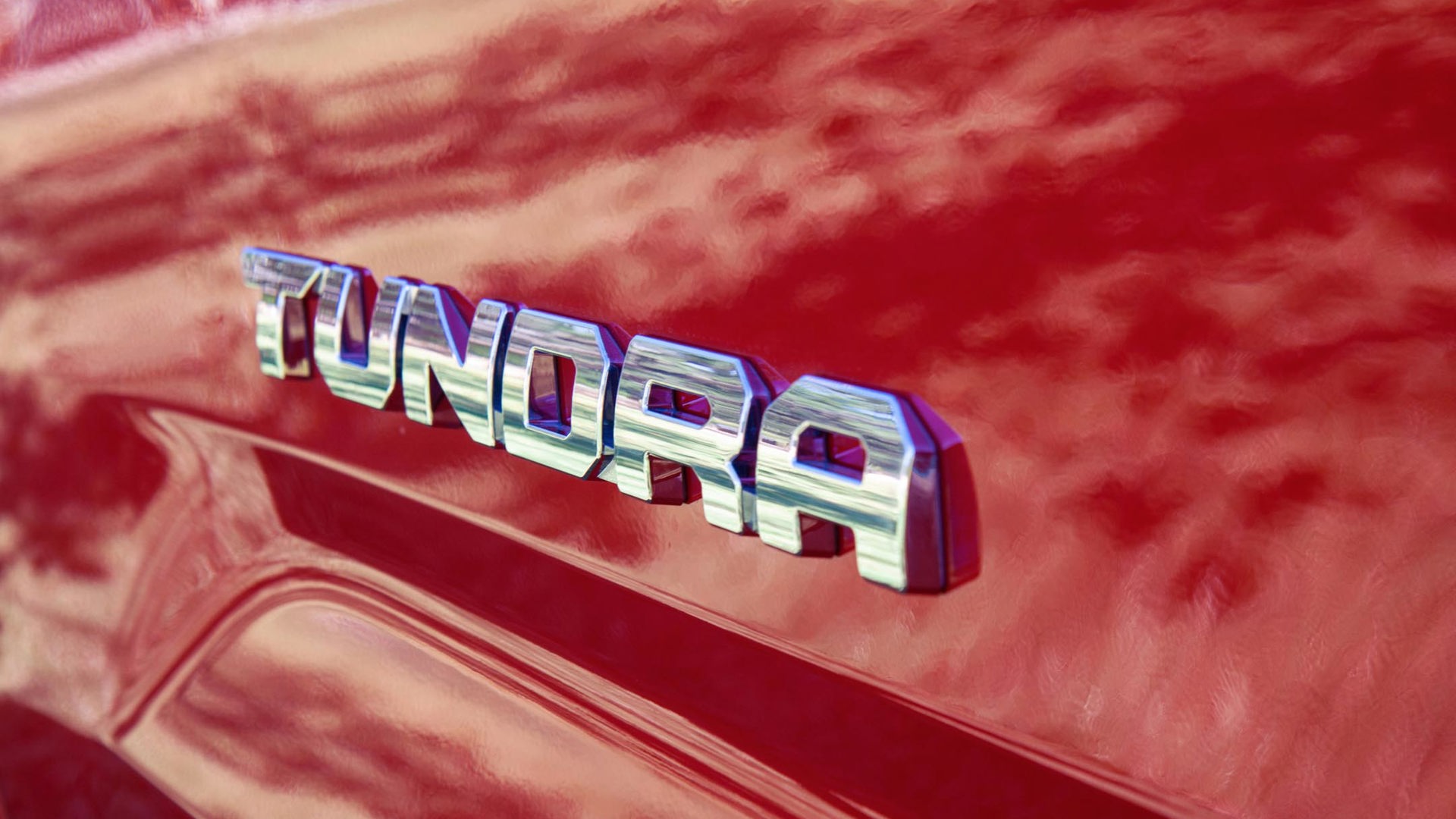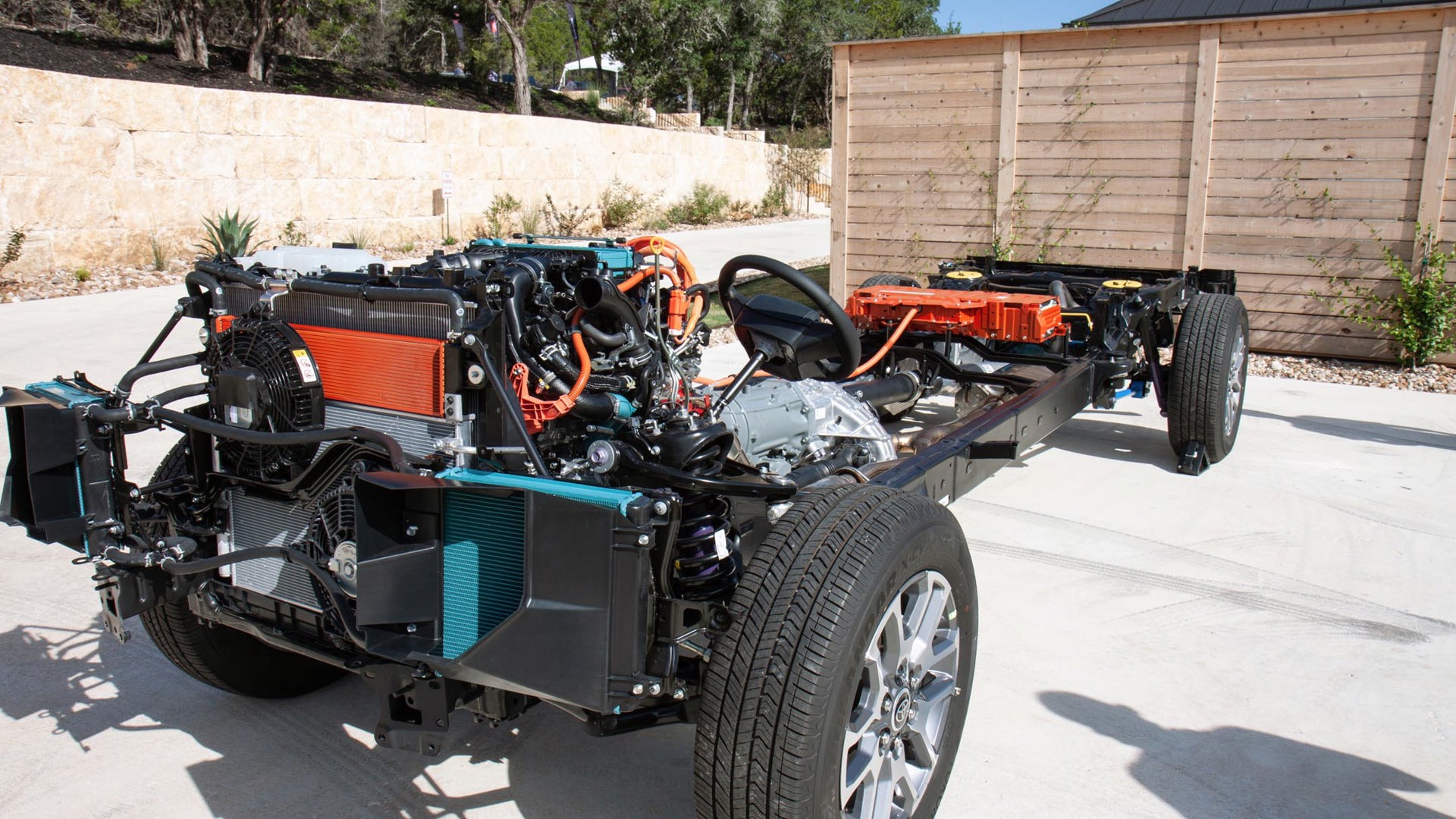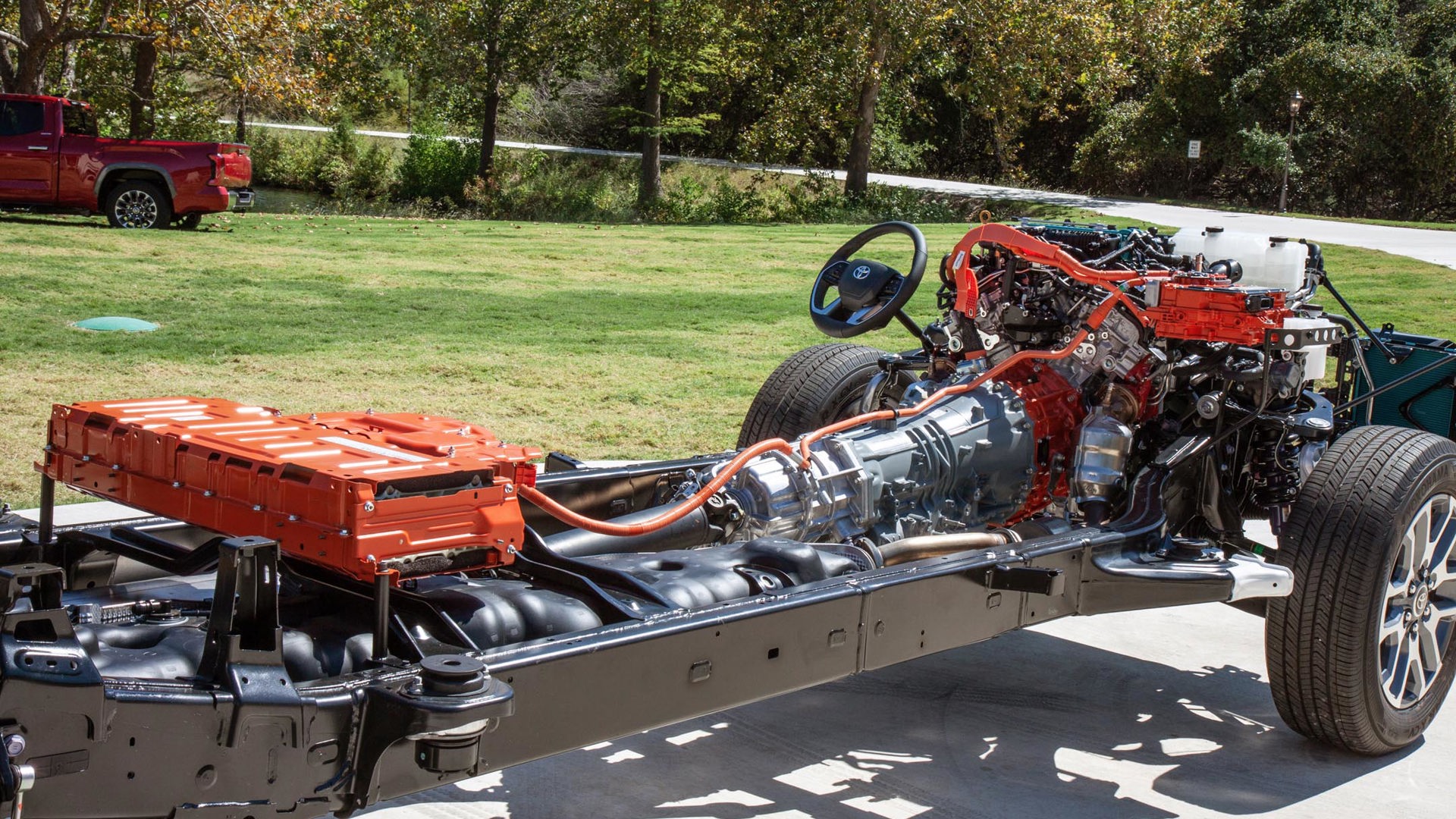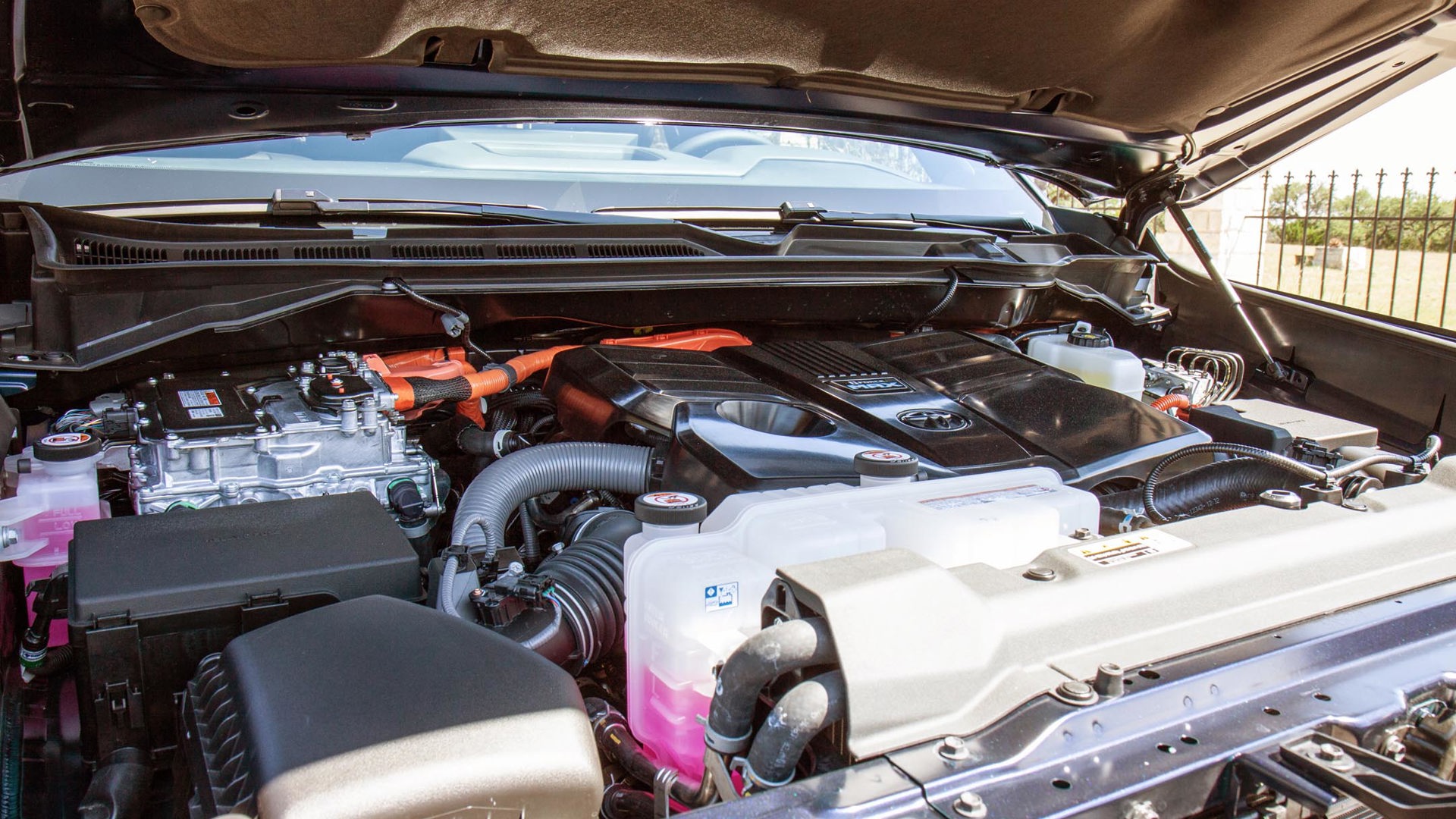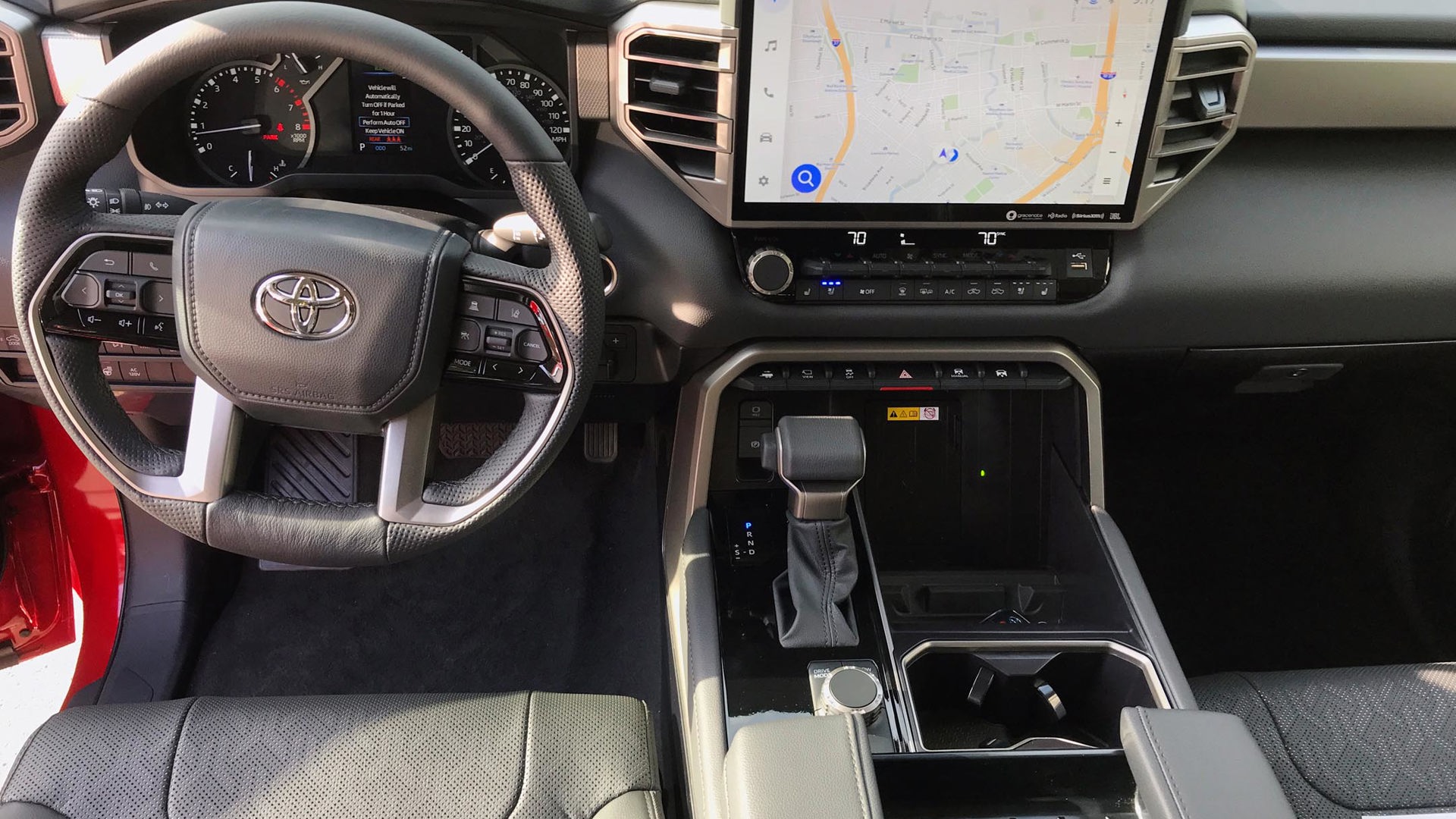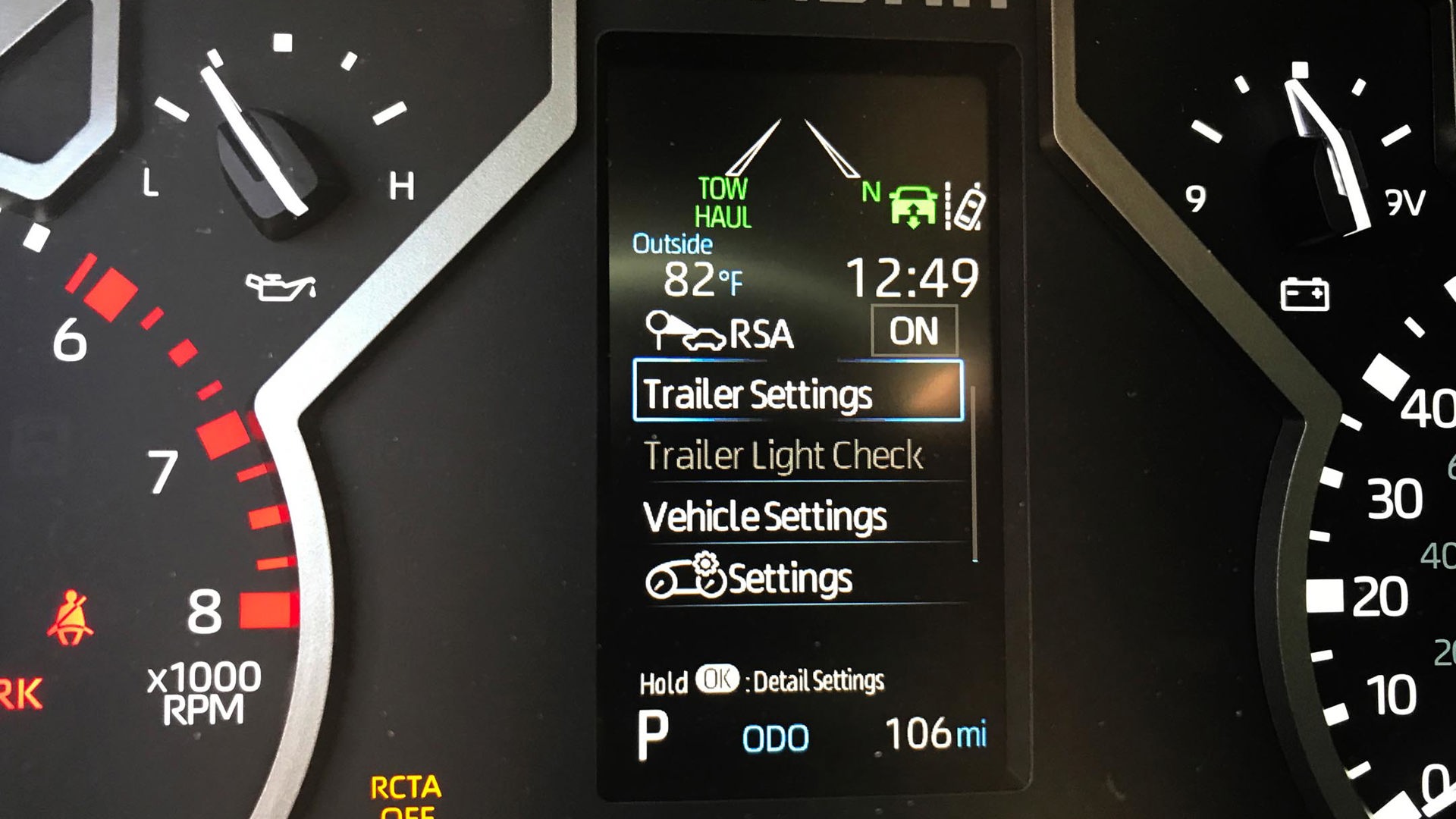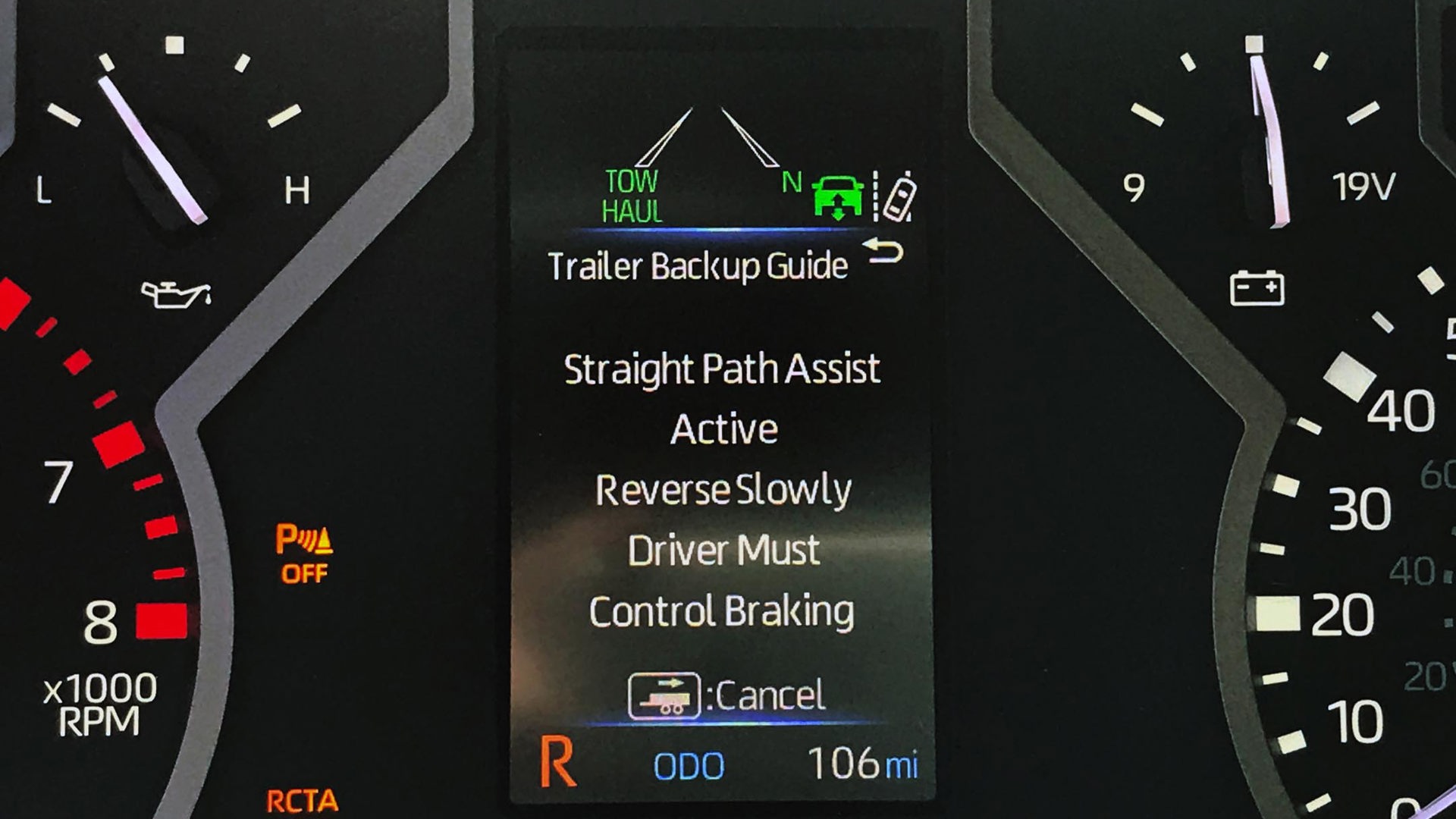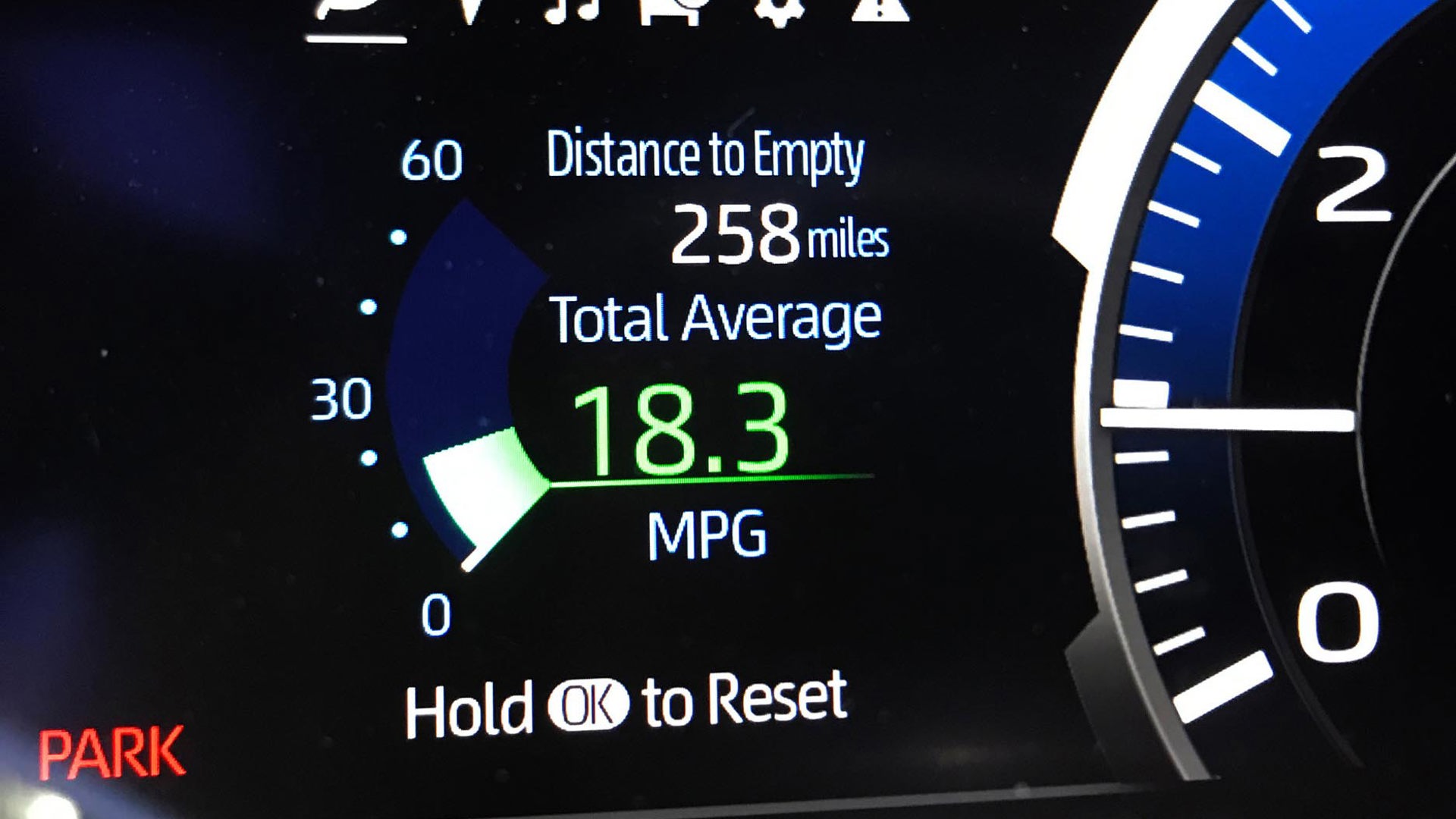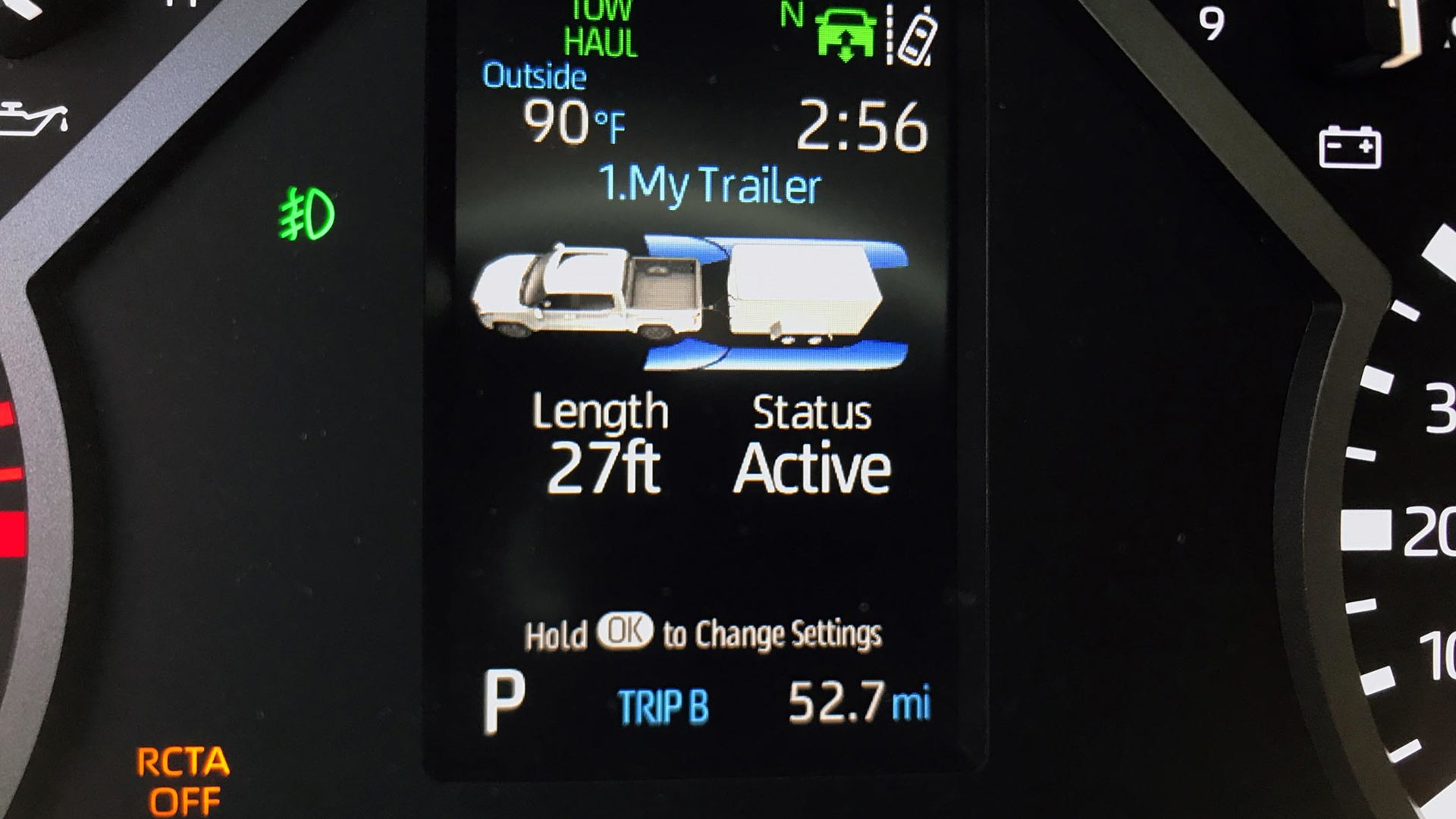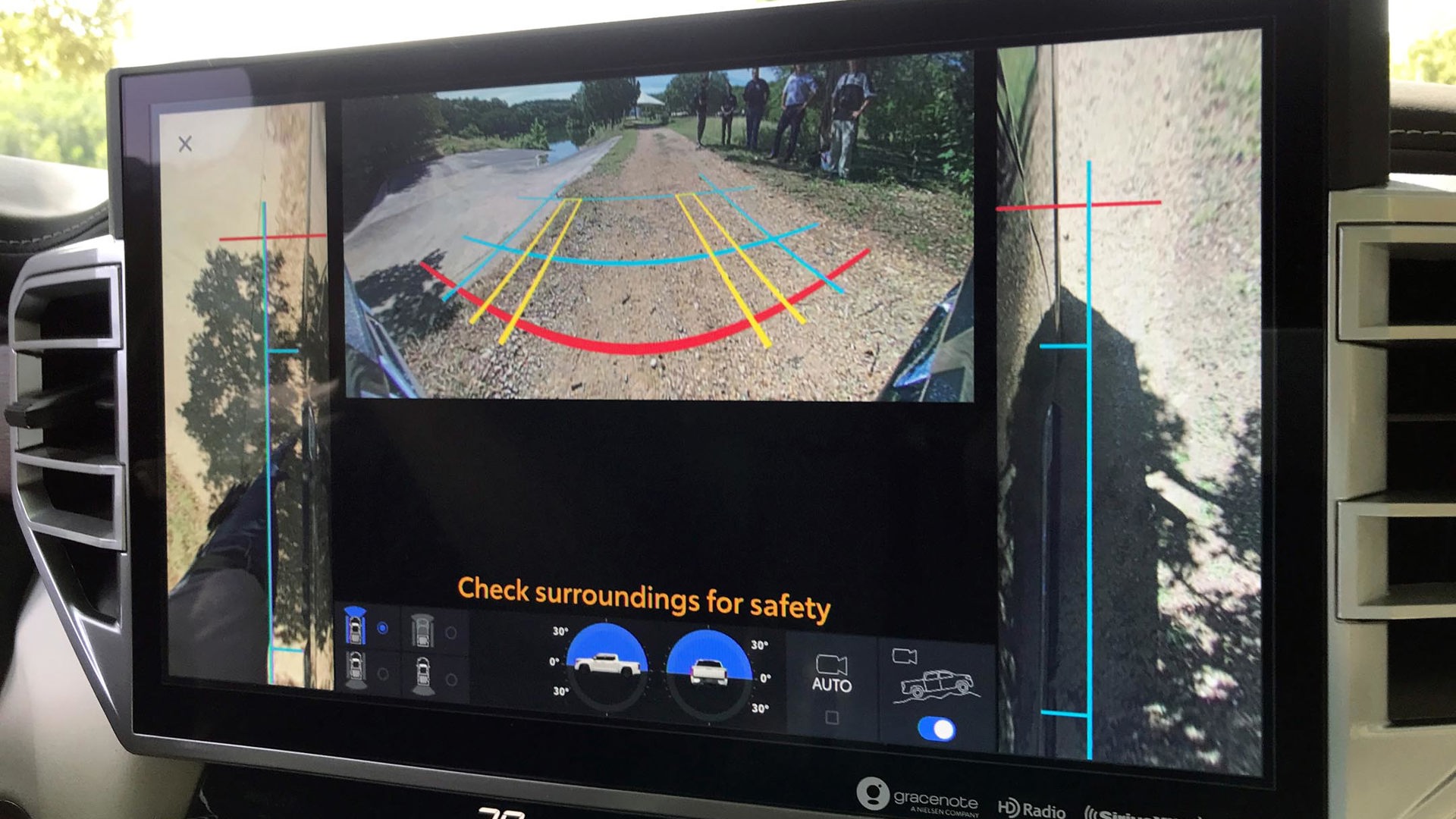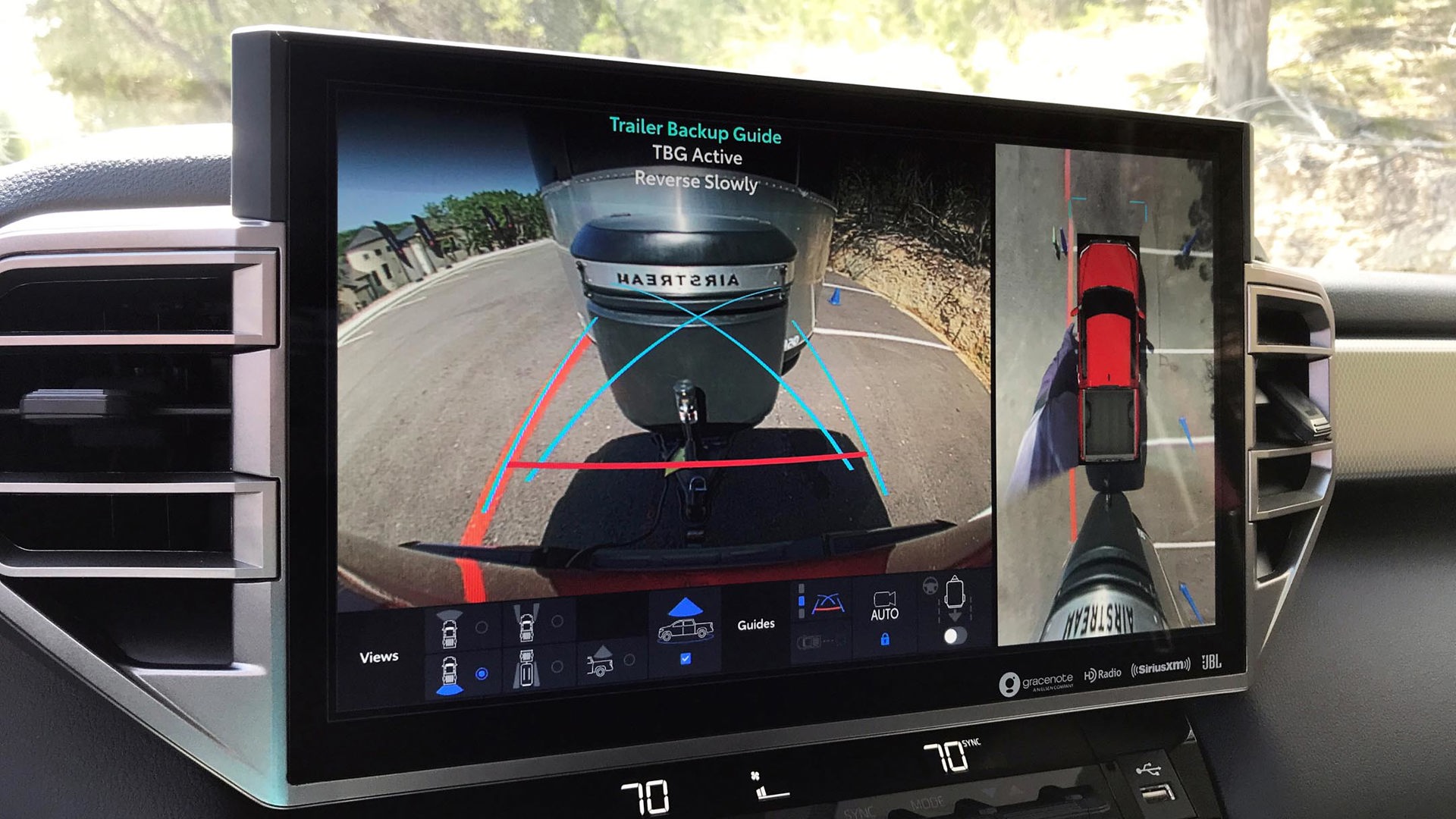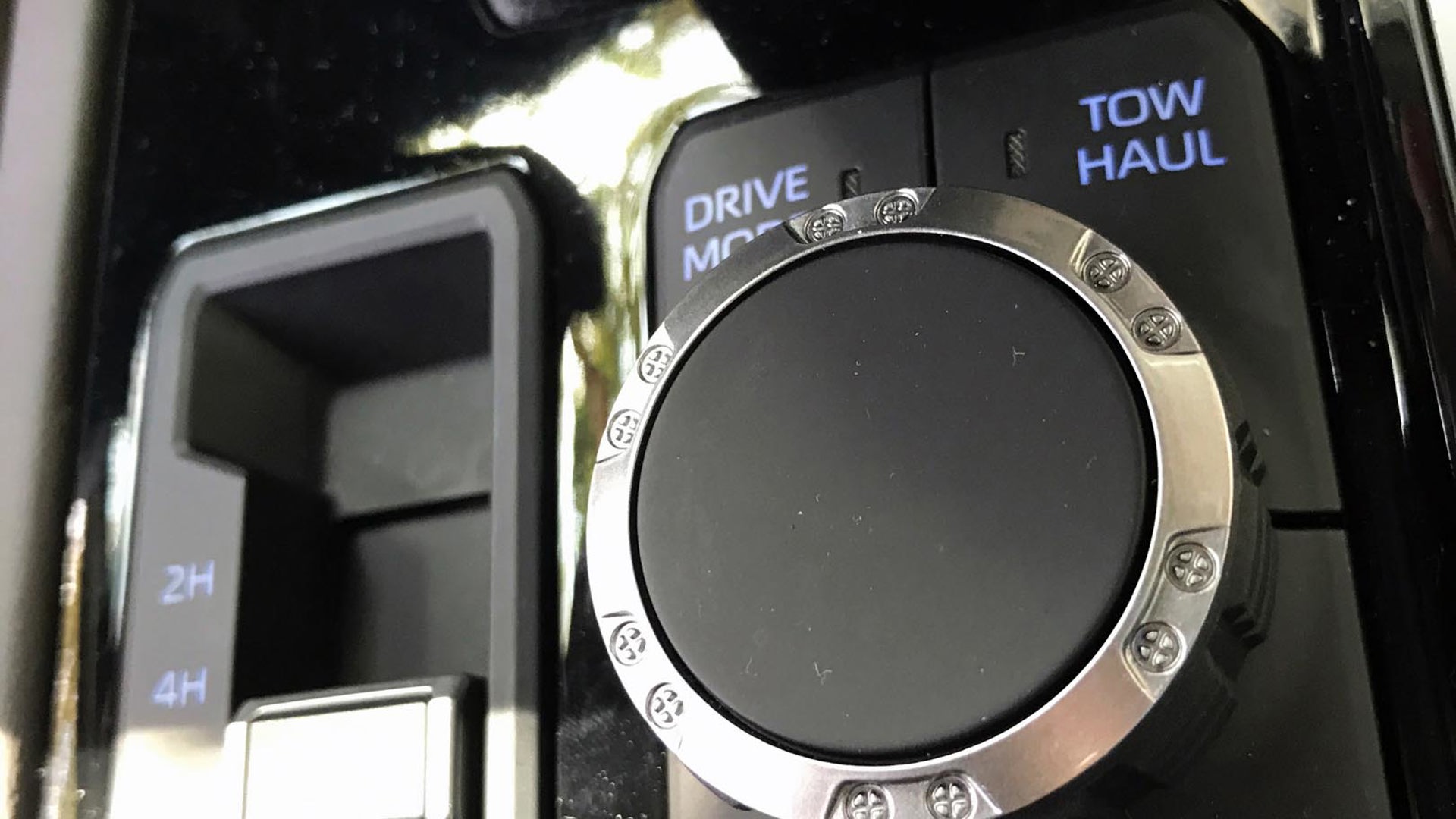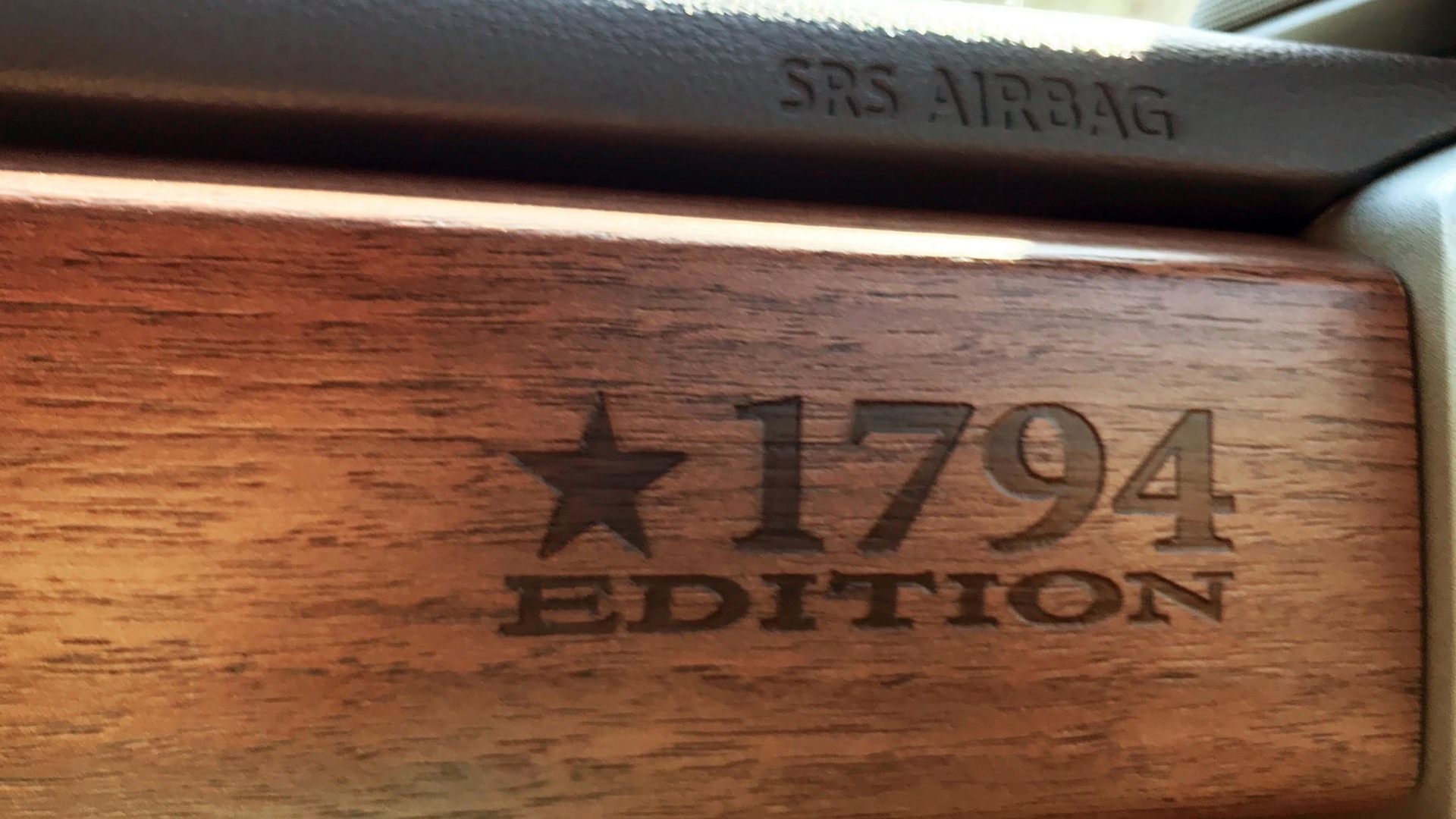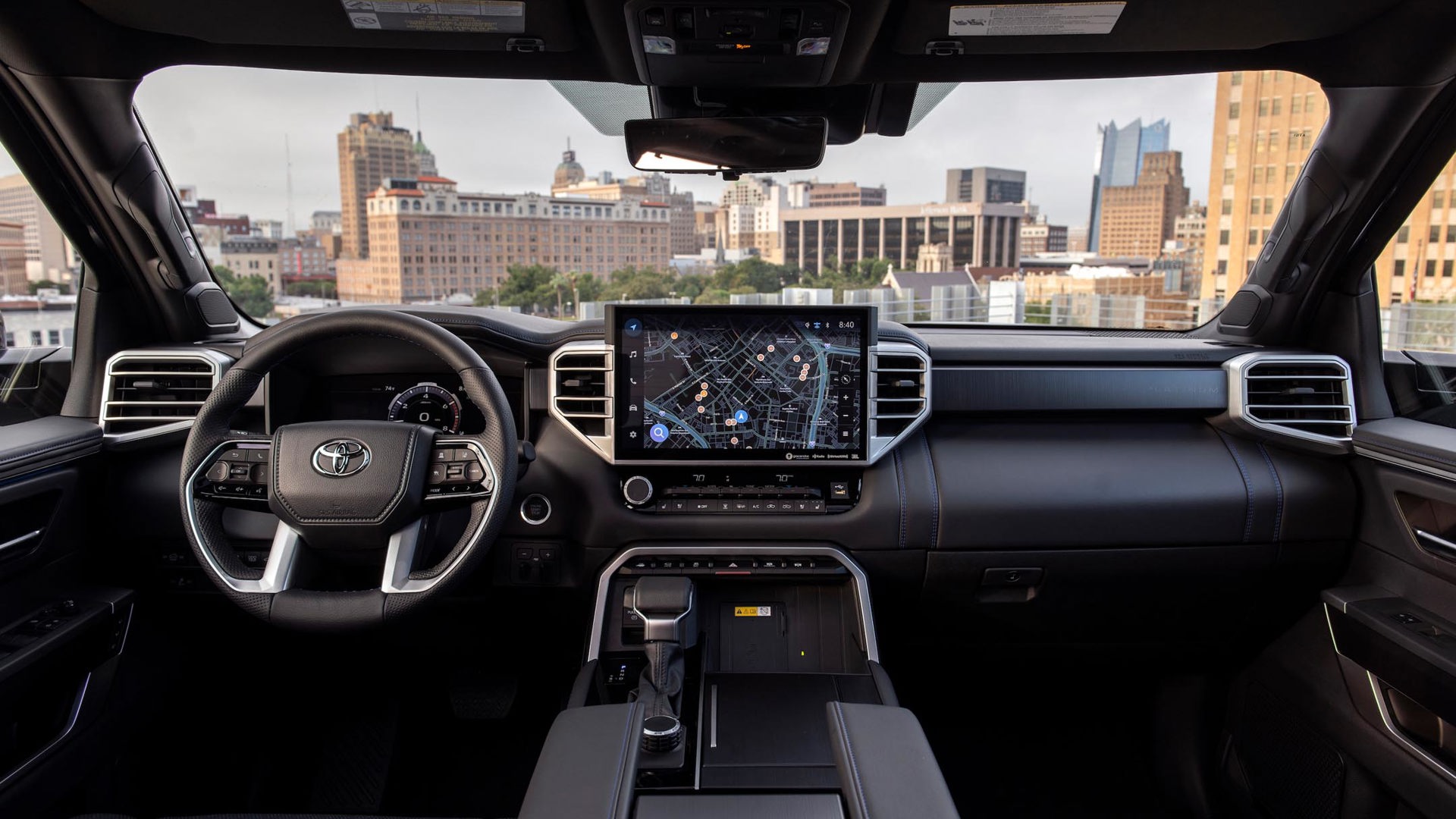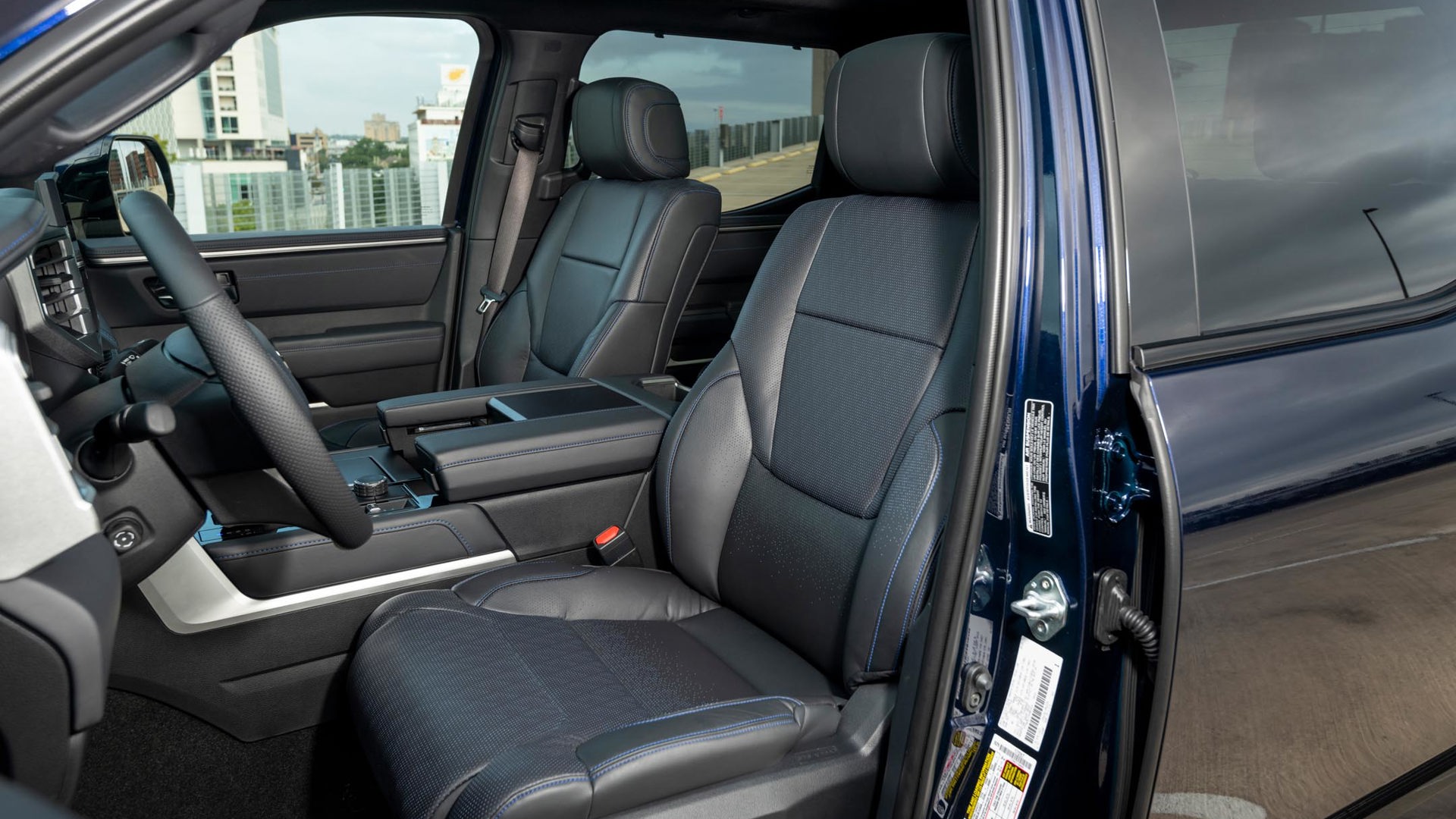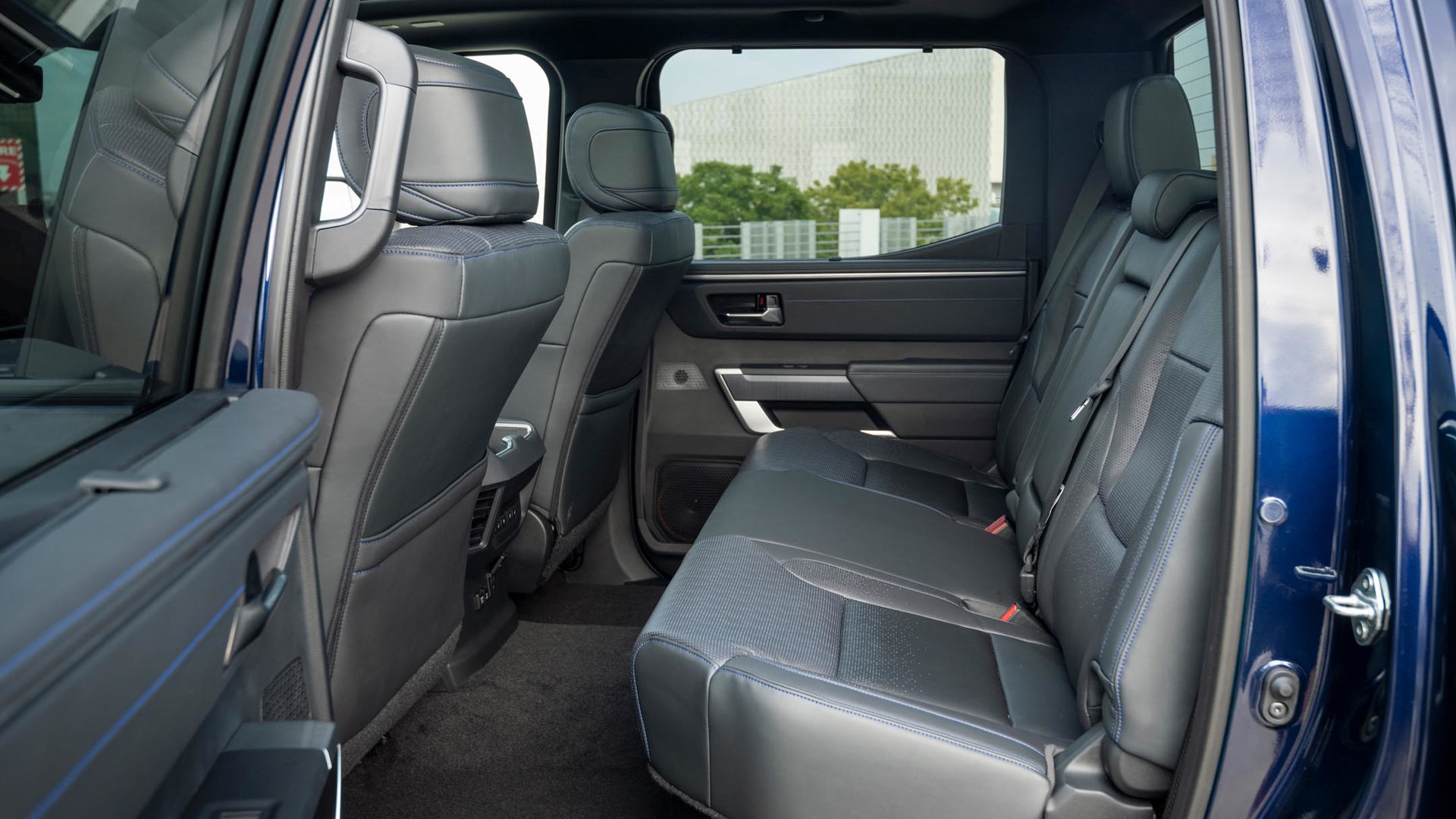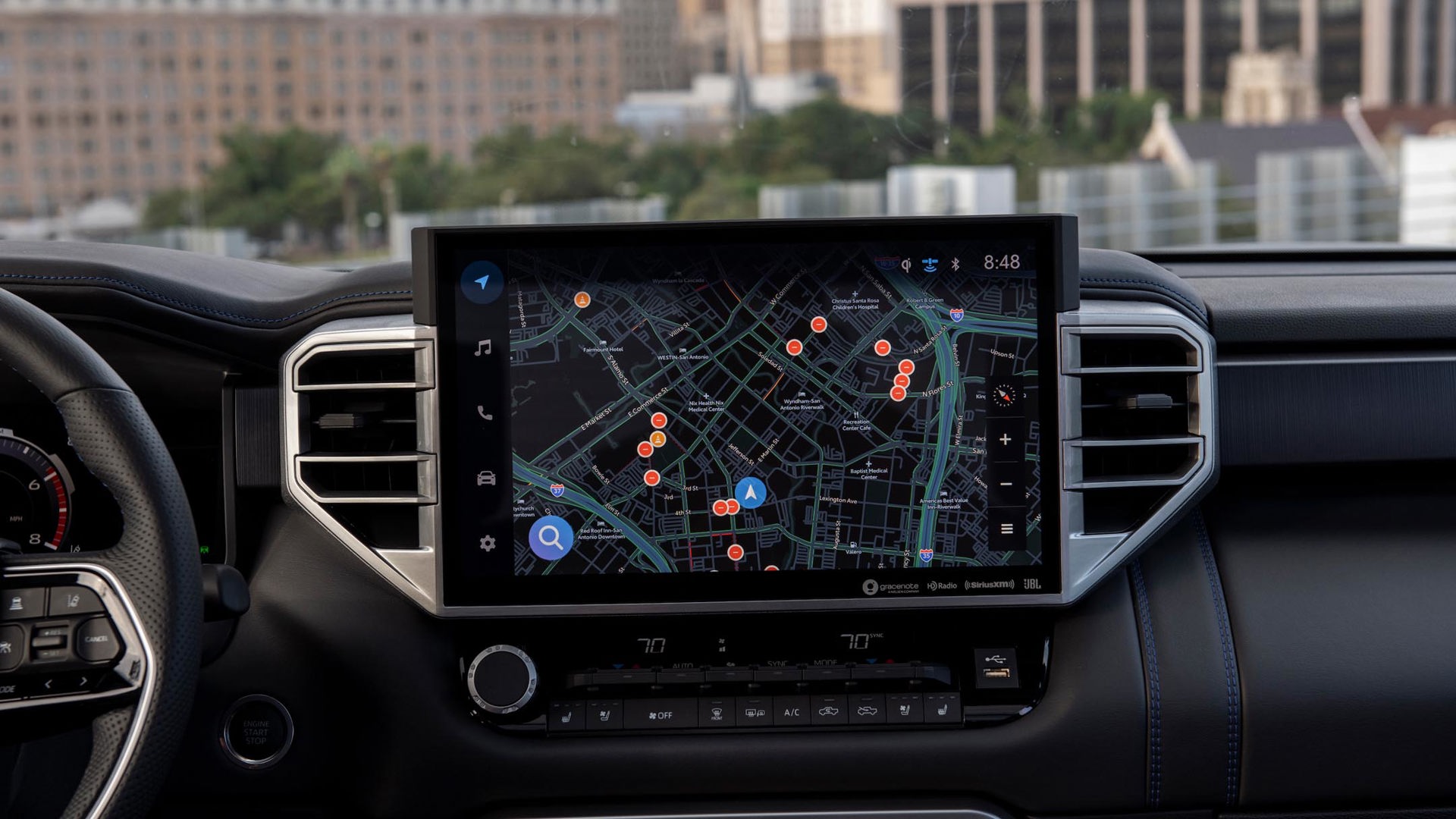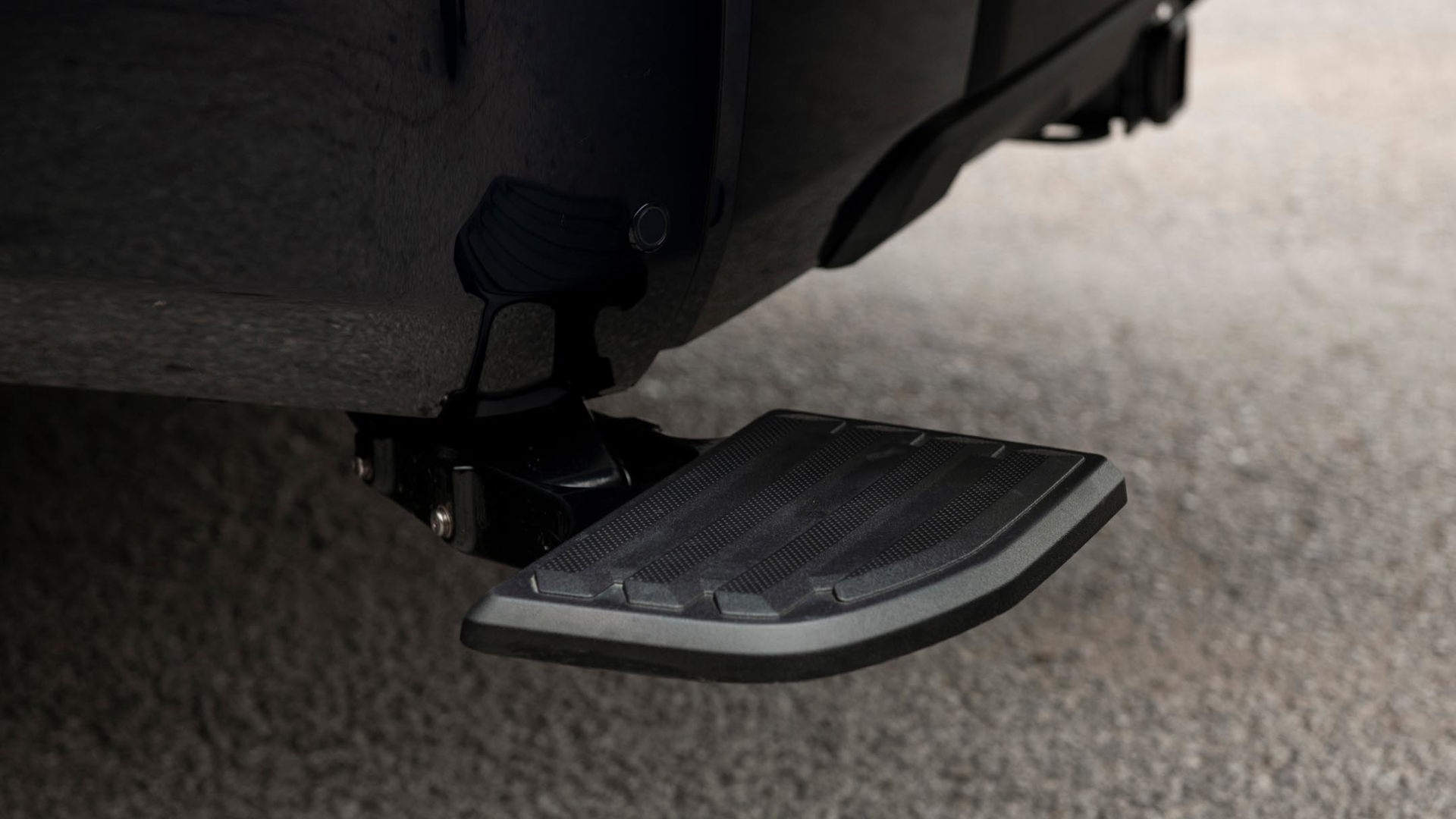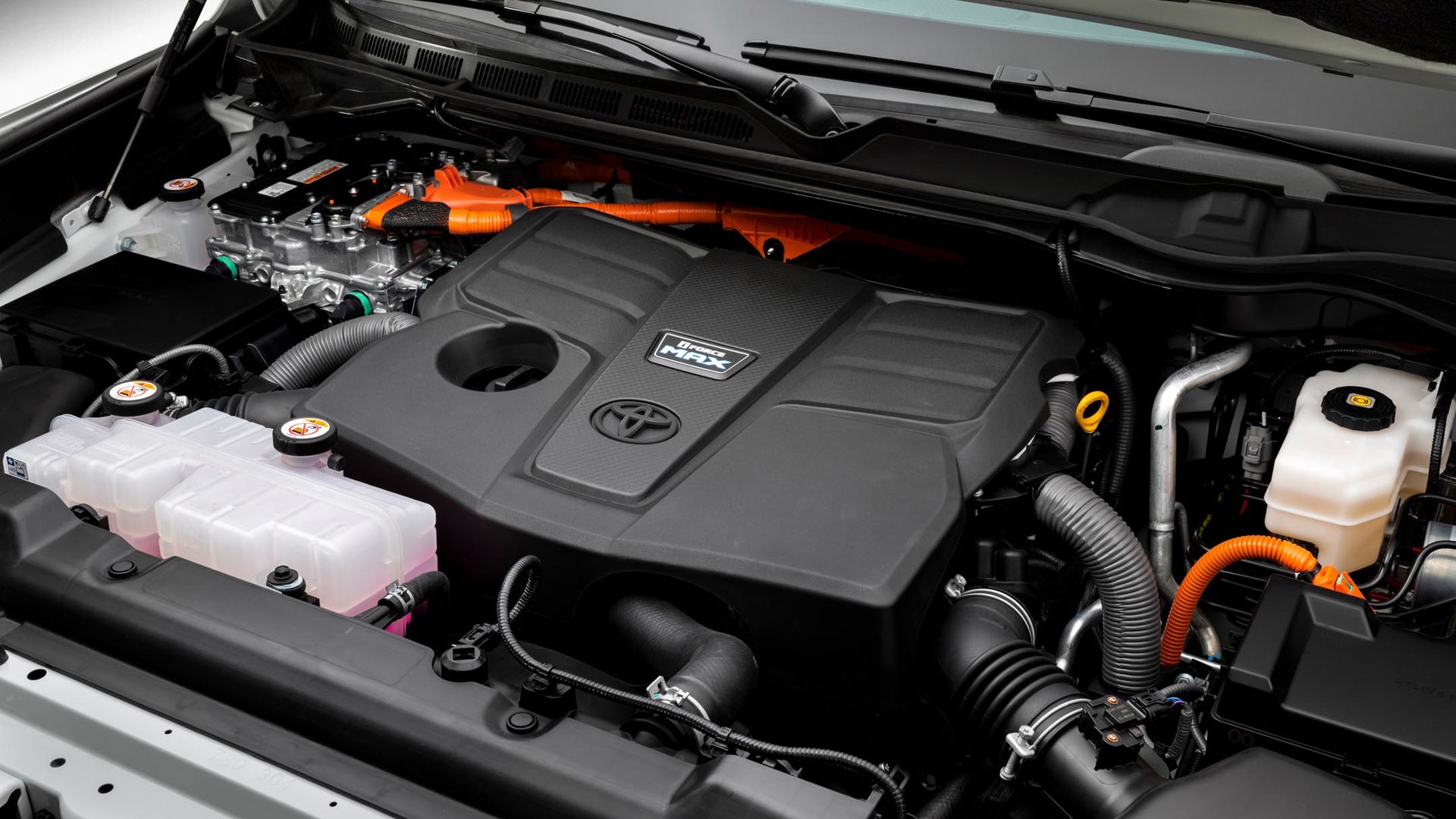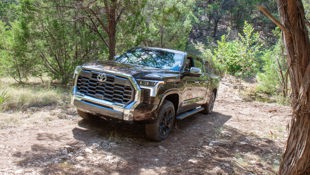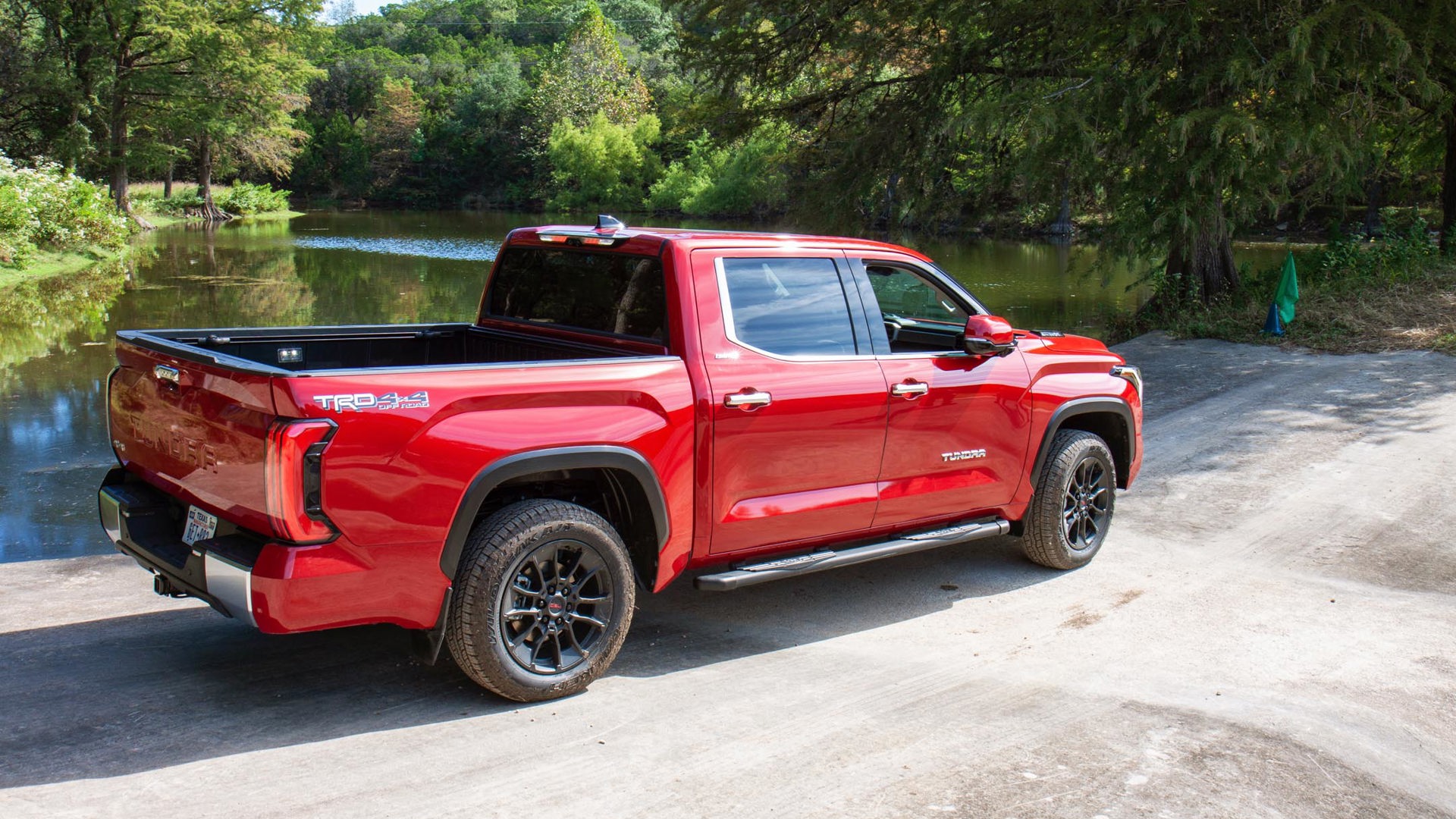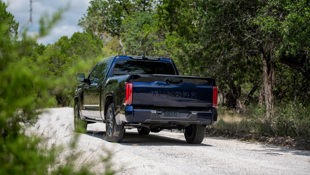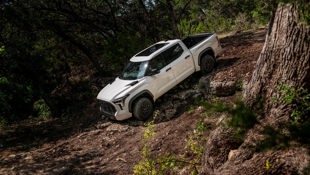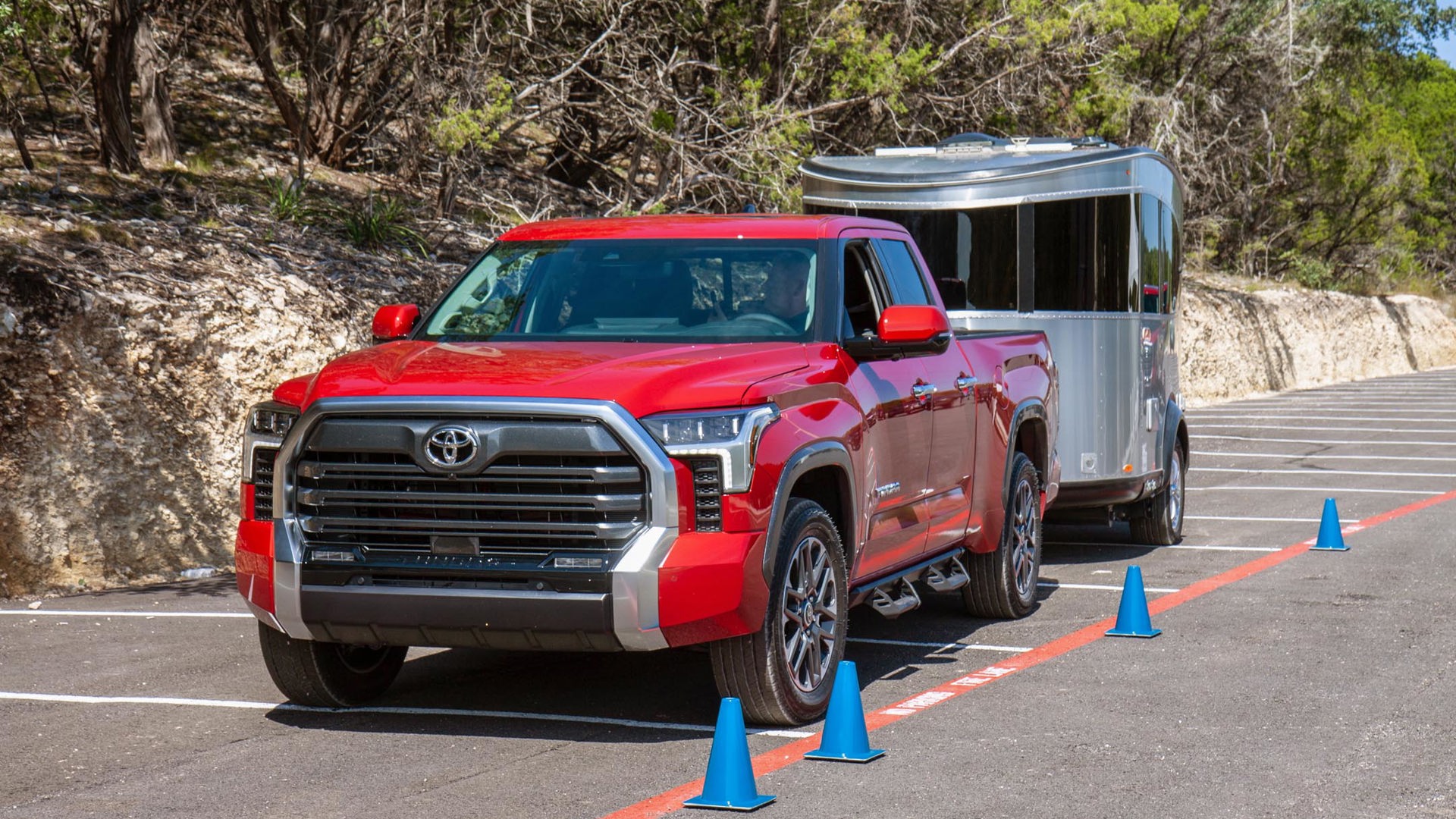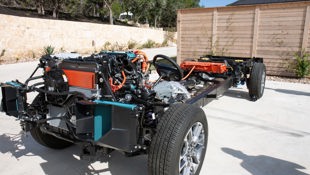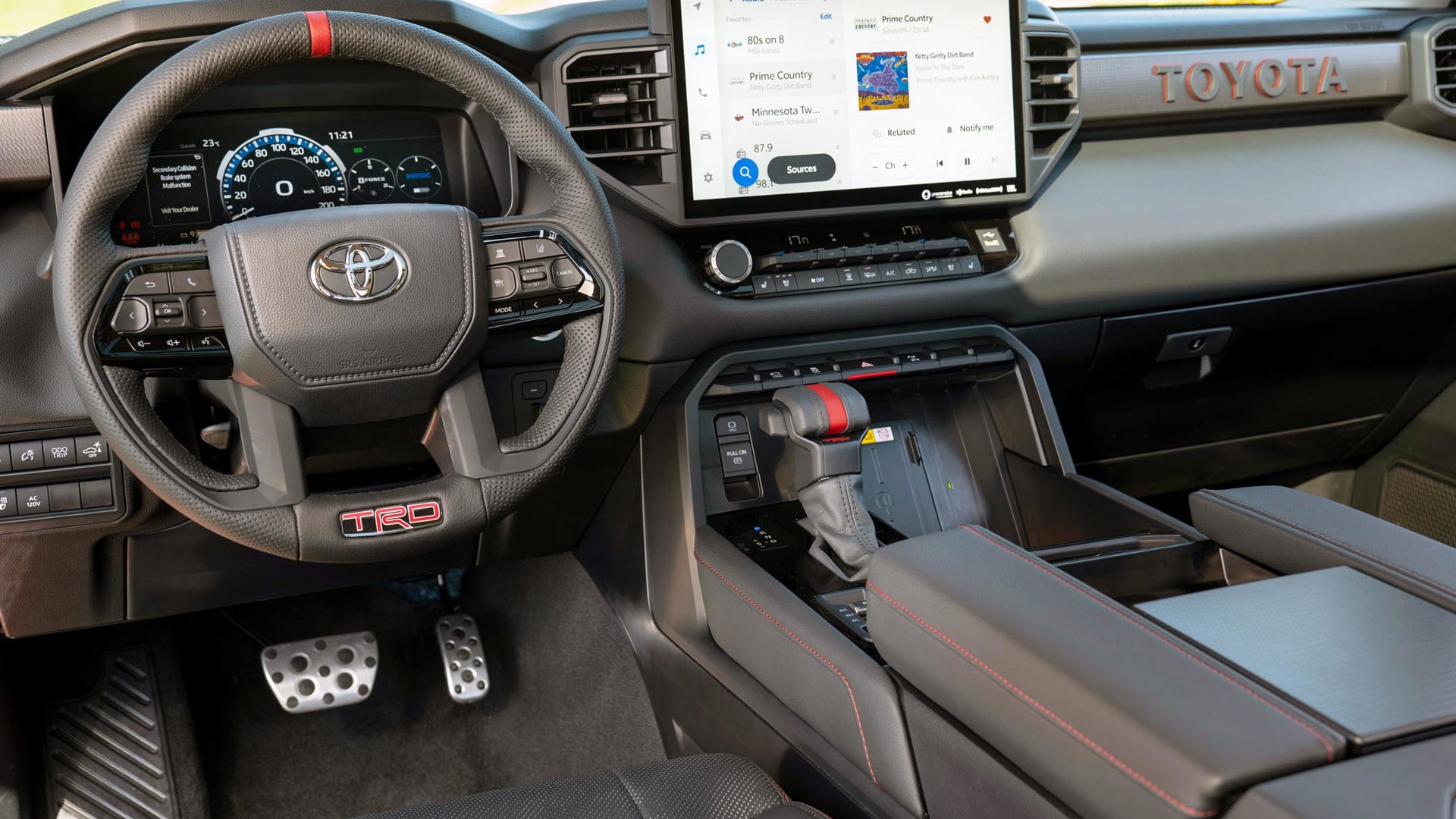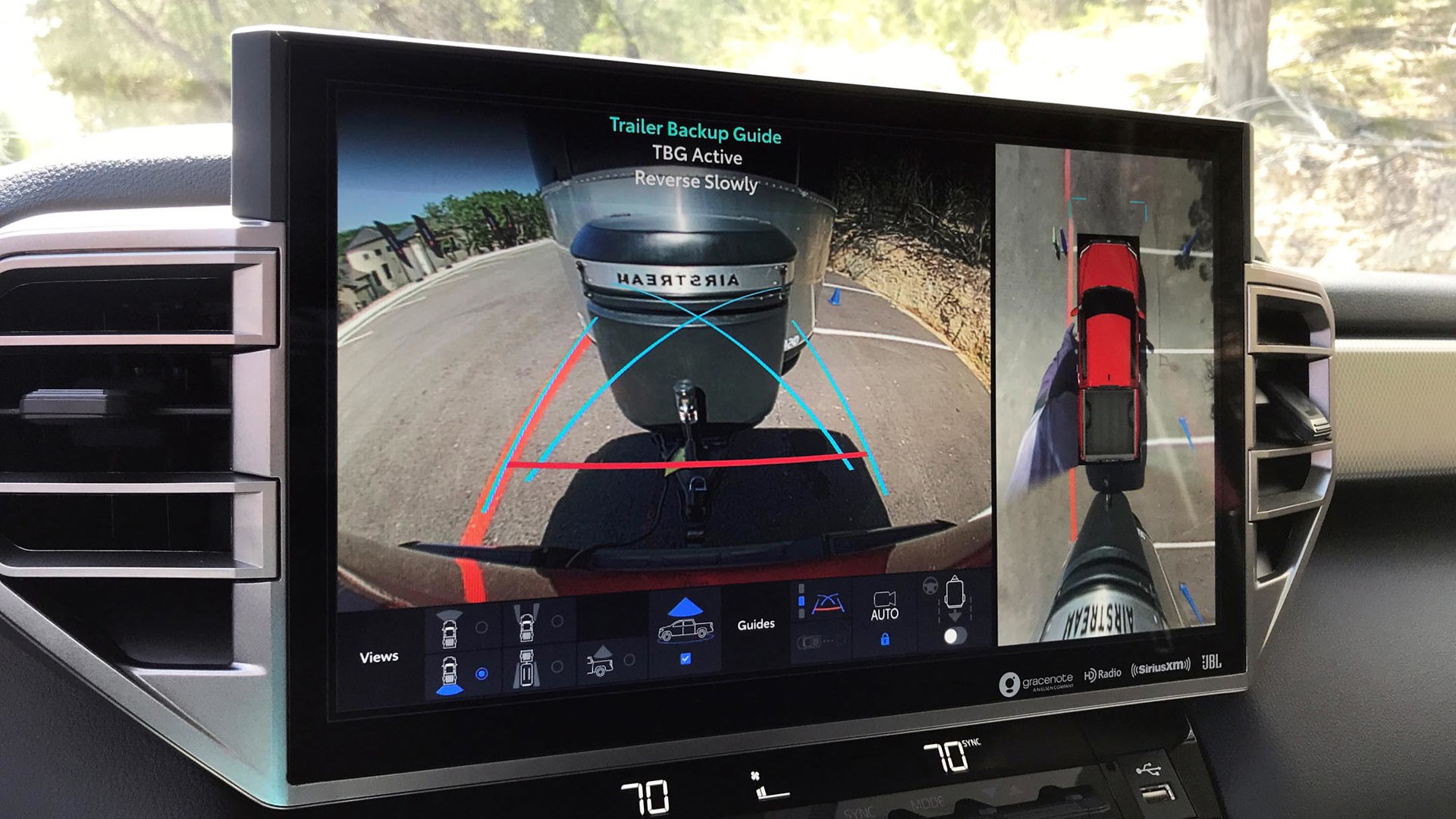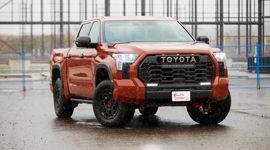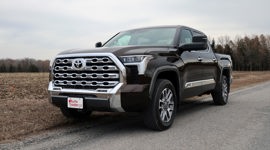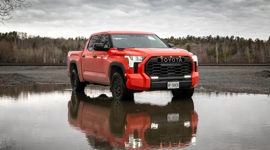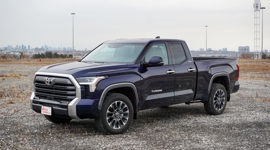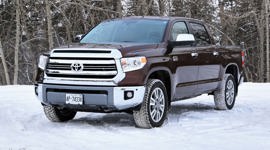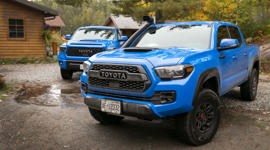Toyota’s always been somewhat of an outlier in the full-size truck segment, circling the perimeter while the Big Three brands have been consistently front and centre.
In the last two decades, about 150,000 Toyota Tundras have been sold in Canada. Compare that to Ford, which sold nearly 130,000 F-150s last year alone – a year that saw sales down industry-wide due to the pandemic.
Pickups are the best-selling vehicles in Canada, with 97 per cent of all trucks sold here are made by Ford, General Motors (GM), and Ram. And while the Toyota Tacoma has been North America’s best-selling mid-size truck for 15 years, with a passionately loyal owner base, its big brother Tundra has fallen further behind. The outgoing model was introduced in 2007 – the same year the iPhone was introduced.
The 2022 Toyota Tundra marks a blazing comeback, with a ground-up do-over that includes an all-new frame, improved ride quality, bold styling, a choice of two new engines, and an impressive list of new technology.
Daring New Design
After nearly a decade and a half, the Tundra’s softly rounded curves are gone, replaced with the blocky, chiselled aggression so prevalent in today’s truck styling. Toyota calls this styling ethos “technical muscle,” intended to convey sophistication and brawny capability. The enormous grille was met with mixed reaction by forum and internet fans, but given there are seven styles to choose from, depending on trim level, there should be enough variety to please most of them.
The wide body, muscular fenders, and blunt face are somewhat reminiscent of the GMC Sierra, and the bulging hood really ramps up the aggression. It’s a much more dominating look than the one it replaces. Integrated body-coloured bumpers are a nice touch, giving the vehicle a finished, street truck appearance.
The chiselled styling carries over to the interior, which is made up of wide, chunky planes and blocks of material. The door sills are wide enough to actually rest an arm on, and the square centre console large enough to hold a camera, purse, and iPad. While some manufacturers have chosen to free up console space by eliminating the traditional gear selector and replacing it with buttons or a dial, the Tundra’s compact gear shift lever sits on the left, closest to the driver, leaving a decent sized cubby for phone, glasses, or keys. The centre stack, too, follows a horizontal design scheme rather than a vertical one, with a standard eight-inch or optional 14-inch display at the focal point.
Tons of Trims
Depending on trim level, there’s fabric, leather, or faux leather upholstery to pick from, the latter with a camouflage pattern. Trim materials vary from matte-black or carbon-fibre look plastics to wood grain. There’s a feeling of airy roominess, particularly in the crew cab version that’s easily big enough to accommodate four large adults. There’s an arm’s width between passengers and plenty of leg- and headroom. Seating is truck-guy broad yet supportive and comfortable, and upper trims get eight- or 10-way adjustment, including thigh support.
There are five trims available: SR, SR5, Limited, Platinum, 1794, and TRD Pro, each getting their own specific grille and wheels. Upper trims will also receive unique design cues; for example, the Platinum has a sleek, finished look with body-coloured features, while the 1794 (named for the established date of the ranch where the current Tundra factory now sits in San Antonio, Texas) sports lashings of chrome trim and cream or saddle-brown interior. Solar Octane red paint, meanwhile, is a TRD Pro exclusive.
All Tundras come with four doors, with the cab-and-a-half featuring 6-foot-5 or 8-foot-1 beds, or the crew cab with its 5-foot-5 or 6-foot-five boxes.
All-New Powertrains
The base twin-turbocharged V6 produces a more than adequate 389 hp and 479 lb-ft of torque, but there’s a noticeable jump when swapping over to the hybrid. It’s not just the extra dollop of output – totals stand at 437 hp and 583 lb-ft of torque, to be exact – but the immediacy of its delivery thanks to the torque’s 2,400-rpm availability, and the electric motor kicking in while the turbos spool up, virtually eliminating any lag.
Though the hybrid system is naturally more efficient than the outgoing V8, it wasn’t developed solely with fuel economy in mind. Rather, the focus was on supplying the flattest torque curve and more readily available power. There’s a really strong linear delivery that’s impressive for a truck with only a V6 – however the enhanced, piped-in engine note is a little contrived. The new 10-speed automatic transmission is a really good match for either engine, always finding the right gear.
Official fuel consumption numbers aren’t yet available, but we observed 18.3 mpg (12.8 L/100 km) in an American-spec Platinum equipped with the hybrid in a mix of highway and city driving.
Much-Improved Ride and Handling
Though the previous Tundra was smooth and comfortable around town, it could get harsh over broken pavement and exhibited some rear end movement, especially when unladen, thanks to its rudimentary rear leaf spring suspension. The new truck now rides on a fully-boxed frame – a platform whose inherent stiffness could exacerbate that harshness. But to offset that rigidity, Toyota threw away the leaf springs and equipped the new Tundra with coil springs and a five-link suspension that deliver better ride comfort and stability. Upper trim levels also offer an optional air suspension at the rear corners only, which helps smooth out the ride, provides load levelling when towing or hauling, and helps raise or lower the truck for easier trailer hookup. Add the TRD Off-Road package and the shocks are upgraded to Bilstein monotubes, while the TRD Pro gets aluminum-bodied Fox internal bypass shocks that also lift the truck an extra 28 mm (1.1 in).
The TRD Pro made quick work of a short off-road course, with a steep, rocky incline hardly posing a challenge to the low-range gearing, locking differential, and rugged underbody plates.
The steering weight is nice, and the wheel’s thickness and heft feel right for a vehicle this size. The cabin feels well-insulated, though we did notice quite a bit of wind noise in the Limited model at highway speeds that wasn’t apparent in other models. Because the vehicles we drove were prototypes, the Toyota spokespeople suggested that some of the exterior trim pieces weren’t quite up to production quality levels. Nevertheless, it was a comfortable, smooth ride and the new rear coil spring and double-wishbone setup up front did an admirable job of soaking up any road imperfections.
Oh, It Tows
Towing a 3,629-kg (8,000-lb) camper trailer up and down the steep hills outside of San Antonio, Texas, was free of stress and drama, and the truck felt stable and in control. There are two different tow settings: Tow or Tow/Haul Plus for loads over 5,000 lb. Depending on which setting used, throttle response, brake regeneration, and steering effort are recalibrated, with brake regen increased on steep grades. A tap on the brakes downhill tells the transmission to hold that speed while you coast down the grade, which not only saves wear and tear on the brakes, but helps regenerate energy in the hybrid-equipped model.
It’s comfortable enough to use as a daily driver, but like most pickup trucks, it isn’t the most practical vehicle in a crowded parking lot. However, when it comes to hauling toys, gardening supplies or building materials, there’s no substitute for a pickup. The Tundra can haul as much as 5,443 kg (12,000 lb), but only in the rear-wheel-drive SR5 trim with the base engine. Tow ratings for all other models hover more or less around 4,990 kg (11,000 lb).
Payload, meanwhile, ranges from 714 kg (1,575 lb) to 880 kg (1,940 lb). While those numbers lag behind competitors, Tundra Chief Engineer Mike Sweers said that rather than pursue the “numbers game” bragging rights, and “holding your breath” while attempting to tow such massive loads, the team focussed on making the Tundra competent and confidence-inspiring to operate.
Going Beyond the Surface
Aside from the new hybrid powertrain and available air suspension, there are a few notable features for the new Tundra. One of the most important elements of a pickup is the bed, and the Tundra has a new aluminum-reinforced resin sheet-moulded compound that’s dent-resistant and corrosion-free. To shave weight and increase efficiency, the hood, fenders, and doors now feature extensive use of aluminum, while the redesigned tailgate is stronger and 20 per cent lighter than before, and opens automatically with either the key fob, or the wave of an elbow near a sensor.
For those who dread backing up their trailer in front of judgemental onlookers, there’s a new hands-free trailer back-up technology that helps keep the trailer reversing in a straight line. It’s easy to use, too; depress the button and the back-up display shows a grid pattern, then take your hands off the wheel and watch the truck keep the trailer backing up in a straight line. Meanwhile, hooking up is made easier with the optional air suspension, which simply raises or lowers at the push of a button.
Surprisingly though, even off-road focused Tundras don’t come with front tow hooks. According to Toyota, tow hooks would have interfered with the aerodynamic efficiency of the front end’s design. Every little bit of streamlining helps in the struggle to achieve fuel efficiency goals, and when dealing with a front end that’s about as aerodynamic as a freezer, something had to go.
Tons of Tech – and Safety, too
The Tundra debuts Toyota’s new multi-media platform, and it’s an impressive piece of technology. Easy to use, it employs the pinch to zoom or rotate familiar to any smartphone user, and, through Google, uses enhanced voice technology to find restaurants, applicable ratings, and parking spots nearby. The cloud-based tech automatically downloads updates. Android Auto and Apple CarPlay are standard.
Available in upper trim levels is a 12.3-inch digital display that replaces the traditional gauge cluster. The display can be modified and features a selection of American national parks scenes that appear at start-up. Other features include a full-width power rear window, panoramic sunroof, heated steering wheel, and heated and ventilated seating.
Like all Toyotas today, the Tundra comes standard with the brand’s advanced safety suite, which includes adaptive cruise control, pre-collision braking with pedestrian detection, lane departure warning with steering assist, rear-cross traffic alert, automatic high-beams, blind-spot monitoring, rear seat reminder, and road sign assist.
Final Thoughts
Overall, the new 2022 Toyota Tundra is a well-balanced solid entry in the truck segment. While prices won’t be available until closer to the release date later this year (and early next year, for hybrid models), Toyota vehicles have a reputation for value and longevity. It’s not as powerful as the segment leaders, but with its good road manners, comfortable interior, and advanced, easy-to-use technology, the Tundra is worth a test drive.
